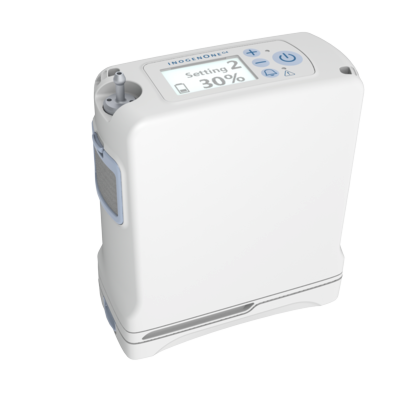.png)
If you’re a respiratory patient with a condition such as COPD, pulmonary fibrosis, or cystic fibrosis, you’ve likely accepted change as a normal part of your life. Being able to implement treatments into your life such as pulmonary rehabilitation, supplemental oxygen therapy, and an improved diet routine is never easy, but it is essential if you want to feel better and improve your long-term prognosis.
But it’s important to remember that COPD treatment rarely remains stagnant. There will likely be a time — whether it’s several weeks, months, or years down the line — when you’ll need to make adjustments to your routine. This could be due to your doctor discovering more information about your condition or it could be caused by a serious event such as a COPD exacerbation.
Either way, you’re going to need to be adaptable in the way that you approach your condition. For example, if your doctor prescribes you 4 hours of supplemental oxygen a day, you might be tempted to get a cheap oxygen device that will simply “get the job done.” However, since COPD is a progressive disease, it’s safe to assume that you will eventually be prescribed more oxygen use by your doctor. When this happens, you’ll be stuck in a difficult situation where you need to sell your old oxygen device and get a new one that better suits your long-term needs.
{{cta('b59df0c1-c4de-47a8-8e1c-0d33d4b414aa','justifycenter')}}
This is why we recommend small lightweight portable oxygen concentrators to the vast majority of people who need oxygen. Even if you don’t think you’ll be getting out of the house every day, portable oxygen allows you to have much more freedom within your own home. What’s more, our respiratory specialists will be able to get you the best deal possible on them. So give us a call or fill out the form at the side of the page to get your free oxygen concentrator guide.
In the meantime, we’re going to be taking a look at the smallest portable oxygen concentrators of 2021. Feel free to leave a comment if you have any questions.
Why is it Important to Have a Small Portable Oxygen Concentrator?
The term “portable oxygen” implies that the machine is lightweight, durable, easy to use, and most importantly — small. Just like how you judge the portability of your phone by how well it fits in your pocket, concentrators can be judged by how easily they can be carried on your shoulder. The smaller the concentrator, the easier it will be to carry it under your shoulder without interrupting your walking.

Another major benefit of small portable oxygen concentrators is that they’re much easier to store. If you ever need to put your concentrator in storage, you can rest assured you’ll find a place for it. Also, since you don’t have to transport small portable oxygen concentrators on the ground, you won’t have to worry about not being able to put it on a table where it could spread germs. This is especially important during this time when people are trying to avoid the novel coronavirus.
There are three different types of oxygen concentrators: home oxygen concentrators, continuous flow oxygen concentrators, and pulse dose oxygen concentrators. The latter two are the only ones that can be labeled “portable” because they can actually deliver oxygen while you’re moving. Home oxygen concentrators, however, need to be connected to a wall outlet in order to put out oxygen.
.png)
The AirSep Focus
The AirSep Focus not only holds the title for the lightest portable oxygen concentrator but it holds the title for the smallest portable oxygen concentrator as well. Weighing in at only 1.75 pounds and with dimensions of 6.4” H x 2.5” D x 4.8” W, the AirSep Focus is truly a mini portable oxygen concentrator. In fact, this device is so small that you can even wear it on your belt!
However, there are some obvious downsides to investing in the AirSep Focus. First and foremost, it only has 2 pulse flow settings with a total oxygen output of 330 milliliters per minute (ml/min). Unfortunately, this is not enough for most oxygen patients, so that will completely rule out this option even if you do like the idea of having an ultra-lightweight portable oxygen concentrator.
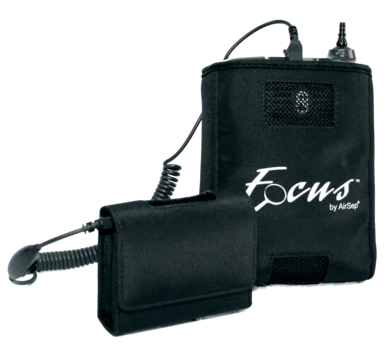
Another downside to the AirSep Focus is battery life. Battery life is what enables you to get out for longer without having to run home and charge your device, and the AirSep Focus only offers 1.5 hours per charge with the standard battery and 3.5 hours per charge with the 8-cell battery. However, the purchase of an AirSep Focus comes with two micro-batteries, so you’ll get 3 hours of battery life right out of the box.
Since AirSep wanted to make the Focus as simple and small as possible, you won’t be able to adjust the flow rate or audible output settings. In fact, unlike most other portable oxygen concentrators, the Focus doesn’t even have an interface with controls on it. Simply turn the device on and you’ll start receiving oxygen. This makes for a very “bare-bones” experience that’s perfect for someone who isn’t looking for something too fancy.
AirSep Focus Specs
| Volume |
76.8 in² |
| Dimensions |
4.8” Wide x 2.5” Deep x 6.4” High |
| Weight | 1.75 Pounds |
| Flow Rate |
Pulse Flow Setting 2 |
| Battery Life |
Up to 3 Hours |
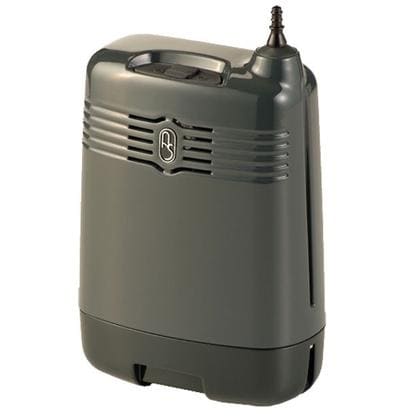
The Inogen One G4
In a way, Inogen is like the Apple of oxygen concentrator manufacturers. While they haven’t produced medical equipment for as long as other companies like Caire Inc. or ResMed, their consistent drive to improve the freedom and independence of oxygen patients everywhere has put them at the forefront of the oxygen industry since the early 2000s.

The Inogen One G4 was released all the way back in May of 2016, but it’s still one of the most popular portable oxygen concentrators on the market. It weighs in at only 2.8 pounds and it has dimensions of 7.2” H x 5.91” L x 2.68” W, so it’s the smallest and lightest portable oxygen concentrator behind the AirSep Focus.
While the Inogen One G4 is not small enough to clip to your belt like the AirSep Focus, it is small enough to fit in a purse or handbag. However, we don’t recommend doing this because it could damage the machine and prevent it from processing oxygen correctly. Fortunately, the G4 comes with a convenient carrying case and adjustable strap so that you can sling it over your shoulder.

The only real limitation the G4 is that it doesn’t go beyond 630 ml/min of oxygen output or a pulse flow setting of 3. This is almost twice as much as the AirSep Focus, however, it still may not be enough for many oxygen patients. Before investing in the G4, make sure that your doctor approves of it first so that you don’t end up with an oxygen machine that doesn’t meet your needs.
{{cta('fa8abc2a-1e88-4fa3-82fd-1cb5b9ed43b2','justifycenter')}}
Inogen One G4 Specs
| Volume |
114 in² |
| Dimensions |
7.2” H x 5.91” L x 2.68” W |
| Weight | 2.8 Pounds |
| Flow Rate |
Pulse Flow Settings 1-3 |
| Battery Life |
Up to 4.5 hours |
The Inogen One G5
As we said, Inogen does not take their work lightly, and this is no different when it comes to their latest portable oxygen device — the Inogen One G5. Releasing in the summer of 2019, the G5 immediately seized the title of “the most powerful pulse dose portable oxygen concentrator” with 1,050 ml/min of oxygen output. As of right now, the only other oxygen machine to match that is the Caire FreeStyle Comfort which was released earlier this year.
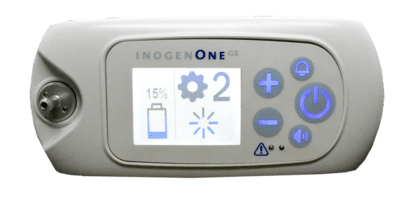
All things considered, the Inogen One G5 is one of the best portable oxygen concentrators for people with high oxygen demands. It offers an outstanding battery life allowing you to get out of the house and stay out for longer, it’s under 5 pounds, and it’s compact and durable. Since it’s so new, you can expect it to be fully supported by Inogen and oxygen retailers for many years to come.
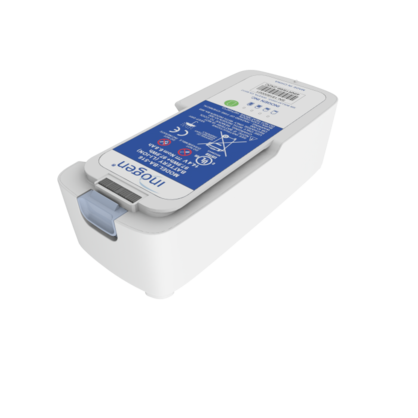
There are a number of accessories sold separately from the G5 that can help you make the most of it. For example, the 16-cell battery will effectively double your battery life, allowing you to stay out and about for up to 13 hours on a flow setting of 1! The G5 external battery charger is also a great option for people who are on the go and want to be able to charge batteries more quickly. Normally, batteries need to be connected to the unit in order to charge, but this device will enable you to charge one separately.
Inogen One G5 Specs
| Volume |
191 in² |
| Dimensions |
8.15" H x 7.19" L x 3.26" W |
| Weight | 4.7 Pounds |
| Flow Rate |
Pulse Flow Settings 1-6 |
| Battery Life |
Up to 13 hours |
.png)
The Respironics SimplyGo
It’s not very often that we would mention a continuous flow portable oxygen concentrator on a list of “the smallest portable oxygen concentrators,” however, the Respironics SimplyGo is the one exception. Continuous flow machines tend to be much heavier and larger than pulse dose units because they have to put out a much larger volume of oxygen than their counterparts.
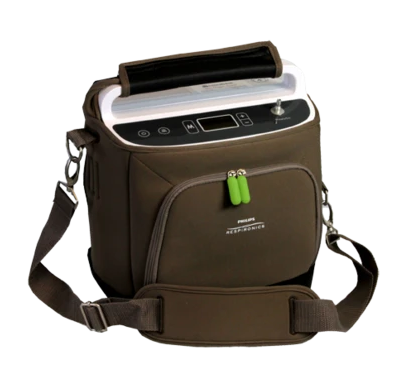
Unfortunately, not all patients are able to use a pulse dose machine, either because it doesn’t provide them with enough oxygen, or their doctor specifically advises them to use continuous flow. The Respironics SimplyGo is 10” H x 6” D x 11.5” W and weighs in at only 10 pounds making it both the lightest and smallest continuous flow portable oxygen concentrator on the market. While the SimplyGo can be carried using a shoulder strap, if you have chronic back pain or some other disability, it’s recommended that you use the rolling cart. Fortunately, this accessory comes with the device, so you won’t need to make any additional purchases in order to experience the freedom that you deserve!
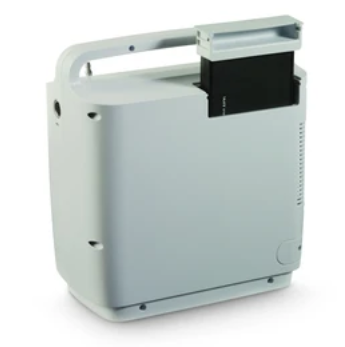
If that was not enough, you’ll be happy to know that the Respironics SimplyGo also comes with a pulse flow option. There are 5 different settings with a maximum oxygen output of 2,000 ml/min and the standard continuous flow option will afford you between 0.5 and 2.0 liters per minute (LPM) of oxygen. Keep in mind that your battery will last longer on one charge when you’re using the pulse dose setting as opposed to the continuous flow setting.
Respironics SimplyGo Specs
| Volume |
690 in² |
| Dimensions |
10” H x 6” D x 11.5” W |
| Weight | 10 Pounds |
| Flow Rate |
Pulse Flow Settings 1-6 Continuous flow settings 0.5 - 2.0 LPM |
| Battery Life |
Up to 6 Hours (Pulse Flow Setting of 2) Up to 1.8 Hours (Continuous Flow Setting of 2) |
Three Steps to Choosing a Portable Oxygen Concentrator
Still don’t know which oxygen concentrator is right for you? While there are many great devices to choose from, it’s important to find one that suits your wants and needs. Follow the steps below to get started.
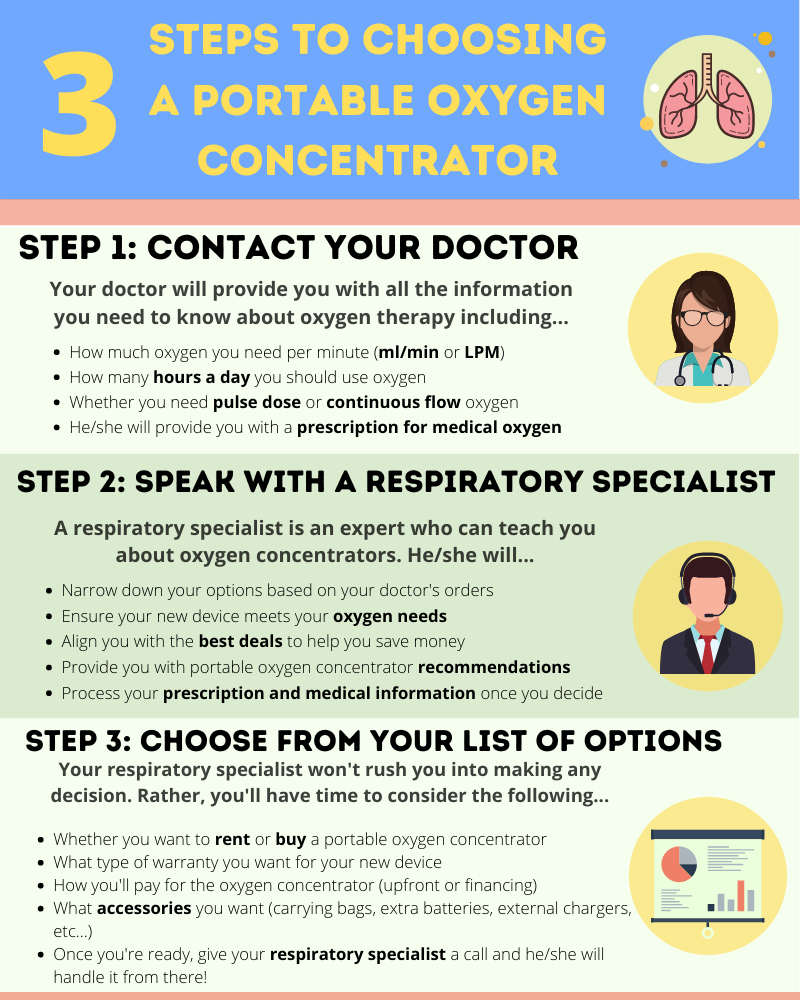
Conclusion
If you’re looking for portable oxygen concentrators for sale, don’t hesitate to reach out to our respiratory specialists here at LPT Medical. There are many factors to consider when buying a new portable oxygen unit, but we’ll simplify it by walking you through each step of the process. All you need to know is what amount of oxygen you need. If you don’t have a prescription or proof of oxygen use, simply provide us with a doctor’s number and we’ll handle that all for you!
If you’re ready to get started, give us a call at 1-888-416-3855.

Medical terminology can be very challenging to understand sometimes. Even with the abundance of resources we have nowadays in order to research and understand these terms, there are always certain things that will be lost in translation. The oxygen industry, for example, is rife with terms that many people don’t entirely understand. This can lead to a lot of confusion when it comes to discussing them with your friends, family, or doctor.
{{cta('fa8abc2a-1e88-4fa3-82fd-1cb5b9ed43b2','justifycenter')}}
In this post, we’ll take a look at some of the most commonly misused respiratory terms including but not limited to respirators, ventilators, and oxygen concentrators. Whether you’re someone with a respiratory condition like chronic obstructive pulmonary disease (COPD) or asthma, or you’re just interested in this topic, you should find this guide useful. If you have any questions about what you read, be sure to leave them in the comment section so that we can help clarify.
What is a Respirator?
A respirator is a type of mask that covers the user’s nose and mouth. They’re designed to reduce the wearer’s risk of inhaling hazardous substances that could damage the lungs and body in general. All respirators must be certified by the Centers for Disease Control and Prevention (CDC) or the National Institute for Occupational Safety and Health (NIOSH).
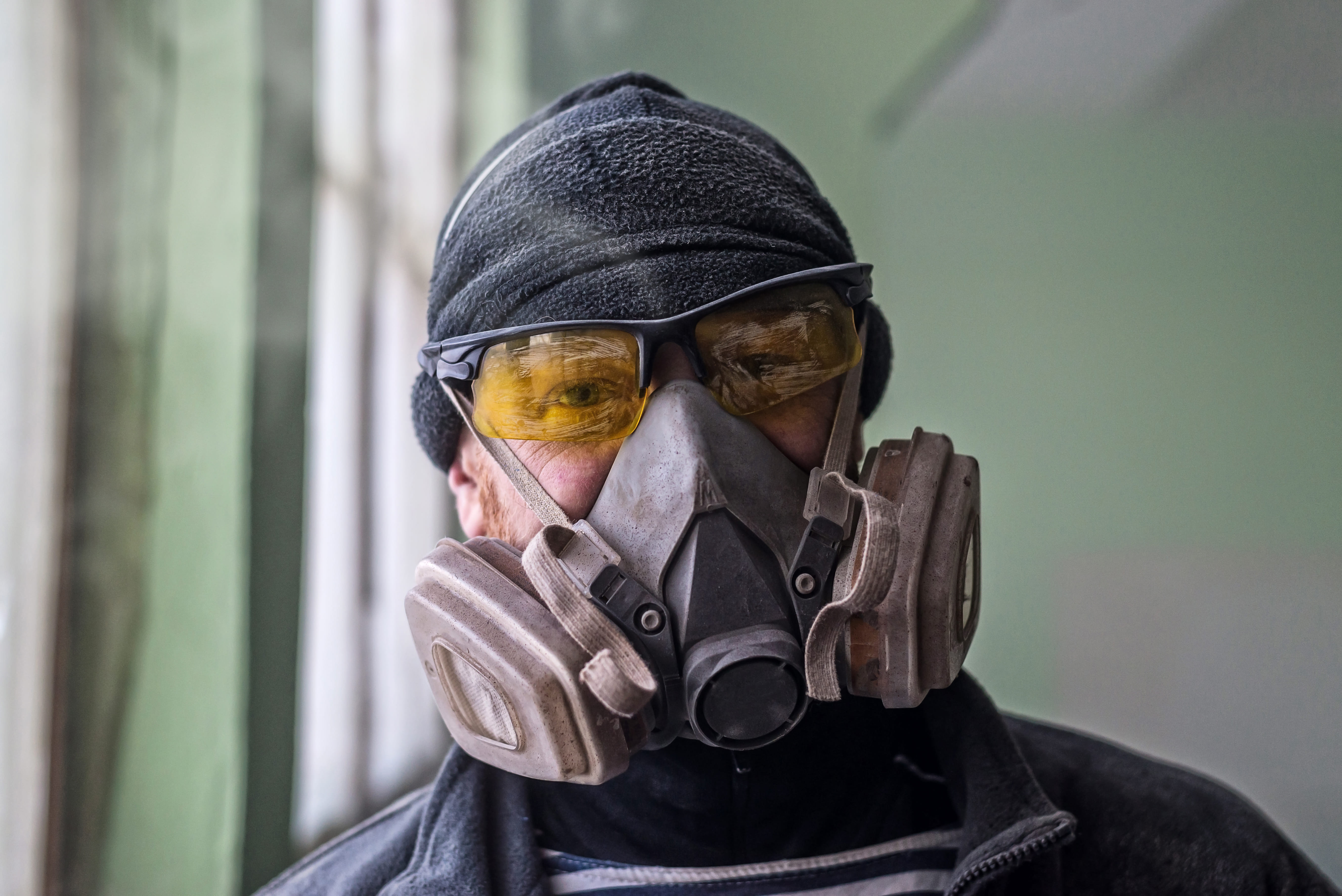
Respirators are used in both medical and industrial settings. In a medical setting, respirators are used by healthcare professionals to filter infectious diseases out of the air that they breathe. Since we first discovered coronavirus 2 (SARS-CoV-2), you’ve likely heard the term “N95 masks” thrown around. This refers to a type of respirator that’s specifically designed to filter out viruses. N95 filtering facepiece respirators (FFR) remove 95% of very small particles (0.3 microns).

Industrial respirators, on the other hand, are designed to protect the wearer against harmful airborne particles found in an industrial setting. Airborne particles are divided into three different groups: small, medium, and large. Small particles are less than 1 micron in diameter, medium particles are between 1 and 100 microns in diameter, and large particles are greater than 100 microns in diameter.
Generally speaking, respirators are used by healthcare workers and industrial workers. Many national and local laws require these people to use NIOSH-certified masks while they’re on the job in order to prevent the spread of infectious disease and to prevent long-term lung damage. Most people need to be trained on how to use respirators correctly because there can’t be any air leaks. What’s more, respirators may be hazardous for people with chronic respiratory conditions like COPD or asthma.
.jpg)
Respirators should not be confused with surgical masks. A surgical mask is a very loose-fitting piece of cloth that’s only designed to filter out very large particles. Surgical masks are worn by the general public to help prevent the spread of COVID-19 as well as other infectious diseases, but they are not an all-in-one solution. If preventing the spread of disease is your goal, you will still need to follow all of the guidelines outlined by the World Health Organization (WHO) like maintaining 6 feet of distance from the nearest person and staying home if you feel sick.
What is a Ventilator?
Ventilators have an entirely different function than respirators. A ventilator is a machine that helps patients with the mechanical act of breathing. It helps push breathable air into the lungs and removes carbon dioxide-rich air from the lungs. Ventilators are typically used in hospitals and they’re designed to help patients who have severely impaired lungs or diaphragmatic muscles and are unable to breathe on their own. They’re also used in patients who have suffered brain trauma.
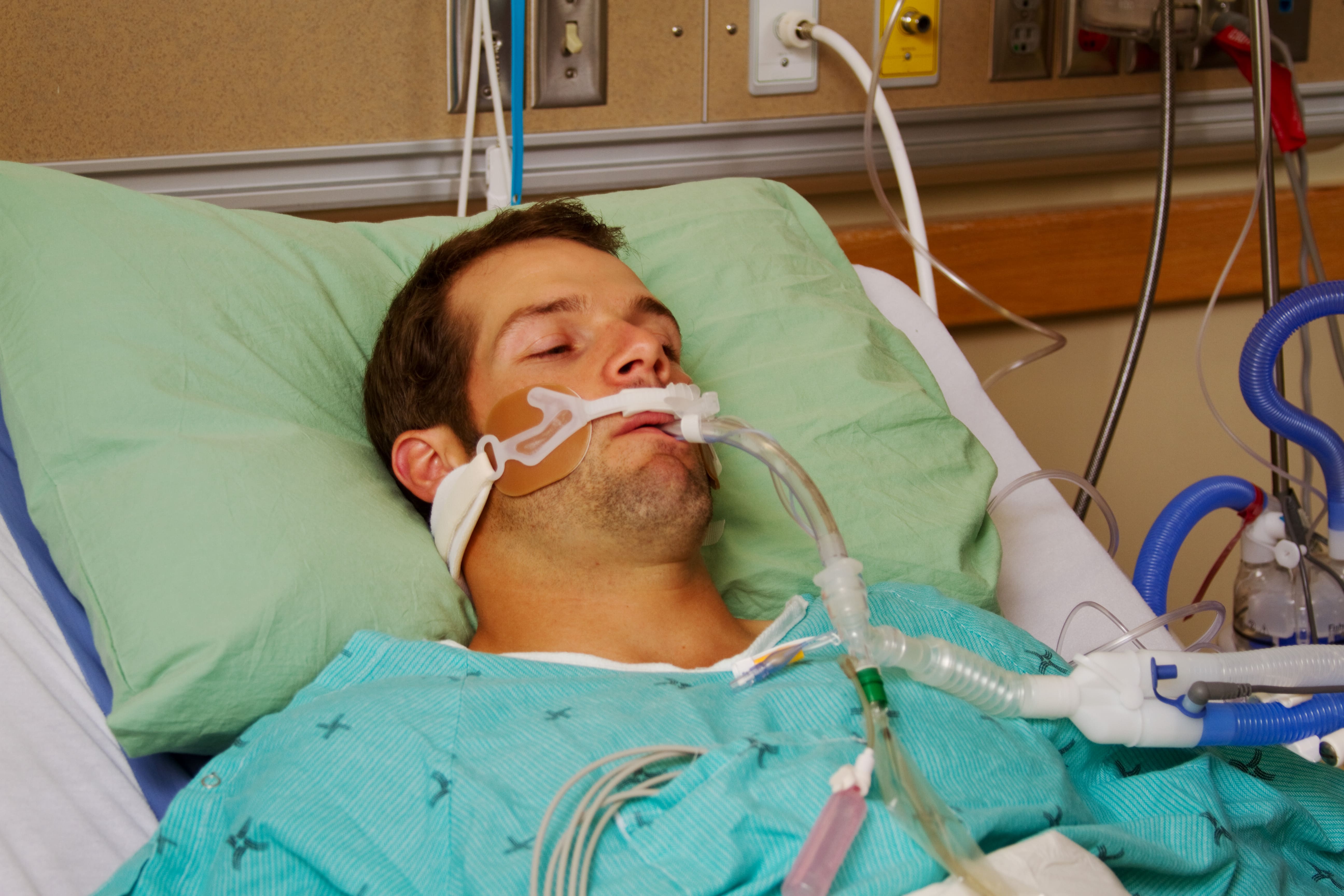
There are two different types of ventilation: non-invasive ventilation and invasive ventilation. Non-invasive ventilation can be done at home via a special machine and face mask, however invasive ventilation requires a medical professional. During invasive ventilation, a tube will be inserted into the airways either via the mouth or a surgical incision in the neck. There are two different methods used to administer ventilation to a patient: positive-pressure ventilation and negative-pressure ventilation.
Positive pressure ventilation was invented in the 1950s and it’s considered the standard, however, negative-pressure ventilation is rarely used today. CPAP, BiPAP, and APAP are all types of non-invasive ventilation that can be done at home.
What is an Oxygen Concentrator?
Simply put, an oxygen concentrator is an electronic device that supplies patients with medical-grade oxygen. Unlike ventilators, an oxygen concentrator does not force air into the lungs. It simply releases oxygen that can be inhaled by the user. Oxygen concentrators are used to treat a variety of conditions, but chronic obstructive pulmonary disease (COPD) and cystic fibrosis (CF) are among the most common.
.png)
Oxygen concentrators work by taking in ambient air and removing nitrogen dioxide, argon, and other impurities. It then concentrates the oxygen and outputs it through a nasal cannula that’s attached to the patient’s face. There are two different methods of delivery for oxygen concentrators: continuous flow and pulse flow. The former is a constant stream of oxygen and the latter is the delivery of oxygen in puffs called “boluses” only when the user inhales.
Since oxygen therapy is often prescribed for 14 hours or more every day, most patients prefer to have a portable option so that they can get out of the house. Fortunately, there are portable oxygen concentrators available, and they’re very lightweight and reliable. The Caire FreeStyle Comfort, for example, is one of the lightest and most powerful portable oxygen concentrators ever produced. It weighs just 5 pounds, provides up to 16 hours of battery life on one charge, and has a maximum oxygen output of 1,050 milliliters per minute (ml/min) of medical-grade oxygen.
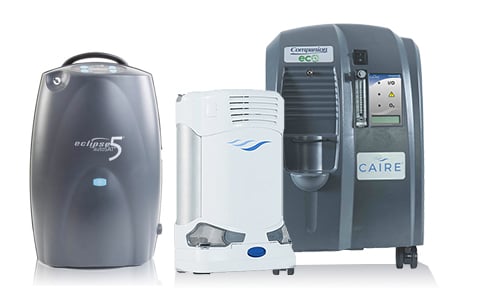
The FreeStyle Comfort isn’t the only outstanding POC on the market, however. Another popular pulse dose unit is the Inogen One G5. This machine weighs in at just 4.7 pounds with a maximum oxygen output of 1,260 ml/min of medical-grade oxygen, and 13 hours of battery life on one charge. For its weight, the G5 puts out more oxygen than any other POC ever produced and its battery life is nothing to joke about either. Inogen also has a long history of customer satisfaction.
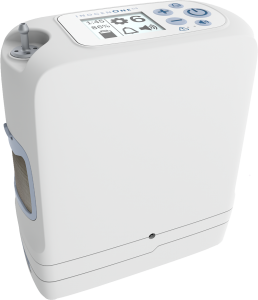
The last POC we need to mention is the Respironics SmplyGo. This one differs from the last two in that it’s a continuous flow portable oxygen concentrator. In fact, it’s the lightest continuous flow POC ever produced. If your doctor prescribes you continuous flow oxygen, this will likely be your best option because it’s only 10 pounds which is significantly lighter than any other option on the market. There are many things to look for in an oxygen concentrator, so be sure to check out this guide before making your decision.
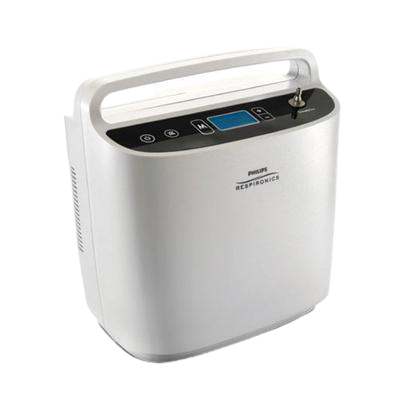
What are Nebulizers and Inhalers?
Nebulizers and inhalers are respiratory devices used to administer medication to the lungs. If you have a chronic respiratory ailment like COPD or pulmonary fibrosis, sometimes it is more effective to administer medication directly to the lungs, rather than taking an oral tablet which will need to go through the bloodstream. Nebulizers and inhalers are similar, but they’re used in different scenarios.

A nebulizer is a tabletop machine that takes liquid medication and turns it into a fine mist called “aerosol.” This aerosol is then inhaled through a mouthpiece. An inhaler does the same thing, but it’s much smaller and lighter so you can take it anywhere. The problem with inhalers, however, is that they require you to precisely time your inhalation in order for them to be effective. Nebulizers allow you to inhale the medication at your own pace.
{{cta('b59df0c1-c4de-47a8-8e1c-0d33d4b414aa','justifycenter')}}
Most people with COPD, asthma, or pulmonary fibrosis will use some combination of nebulizer and inhaler therapy. You’ll likely use your nebulizer for long-term treatment and your inhaler can be used while you’re out of the house as a “rescue Inhaler.” In other words, you’ll use fast-acting bronchodilators that open your airways in the event that you experience an exacerbation.
What are CPAP, BiPAP, and APAP Machines?
CPAP, BiPAP, and APAP are all different types of positive airway pressure (PAP) therapy. They’re used exclusively by people with sleep disorders, especially obstructive sleep apnea (OSA). This is when the muscles in the throat relax during sleep causing breathing to stop momentarily. Complications of sleep apnea include cardiovascular problems, daytime fatigue, eye problems, and more.
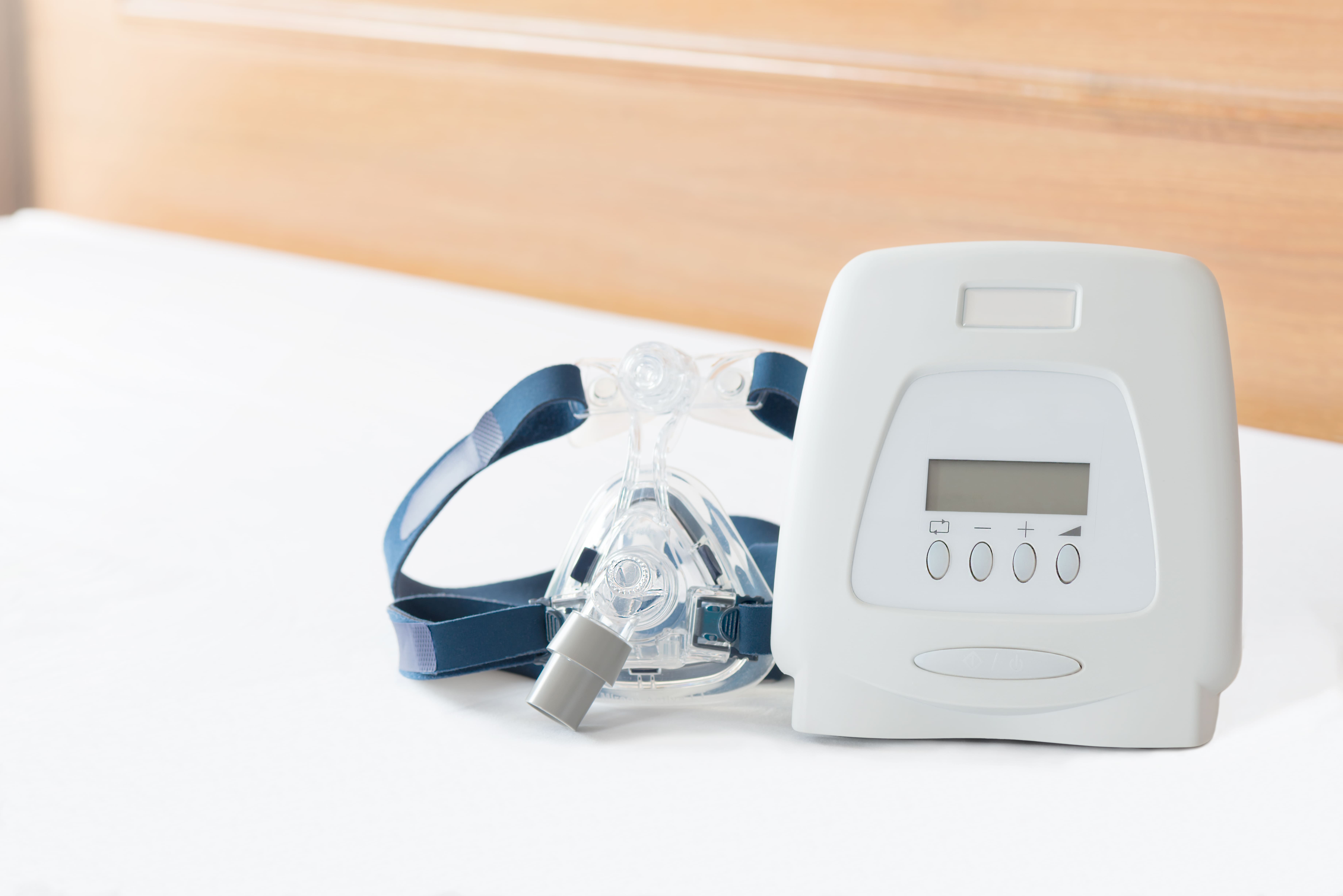
Essentially, positive airways pressure is designed to keep the airways open during sleep and prevent any disruptions. If a patient has both a chronic lung disease and obstructive sleep apnea, a continuous flow oxygen concentrator can be bled into the PAP therapy device to ensure they are able to maintain their blood oxygen levels. There are three different types of PAP therapy machines, so it’s important to understand how they differ.
Much like a continuous flow oxygen concentrator, constant positive airway pressure (CPAP) machines put out a consistent stream of high-pressure air. For many OSA patients, CPAP machines will work just fine because you simply need to turn the device on before you sleep and it will run all night. However, the problem with CPAP therapy is that the same air is being applied when you’re exhaling. If this causes difficulty exhaling, it could lead to a buildup of CO2 in your system.
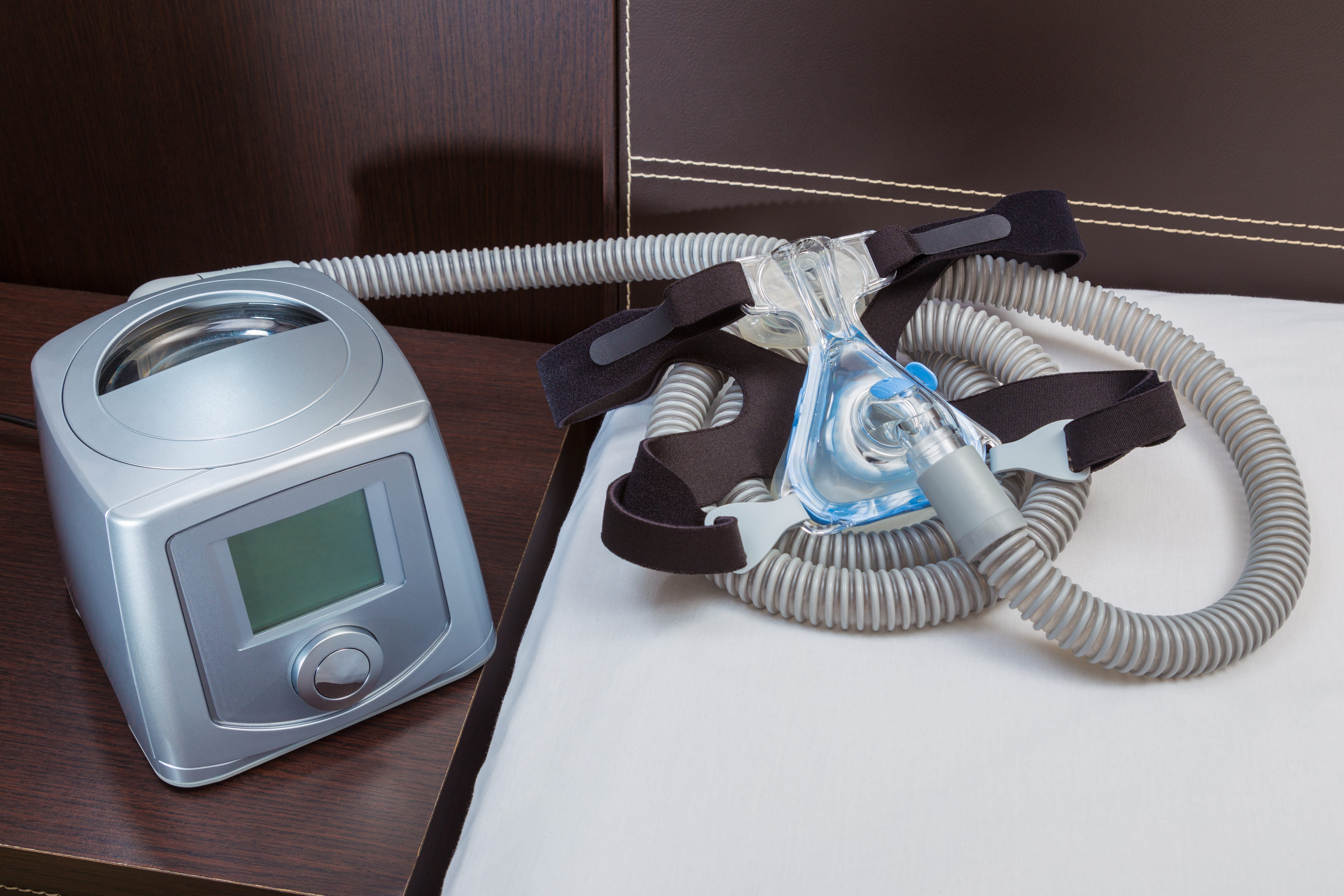
BiPAP machines are an alternative to CPAPs which have two different pressure settings: one for inhalation and one for exhalation. This will afford you more comfort as you exhale and reduce the risk of you retaining CO2 as you exhale. An auto-adjustable positive airway pressure device (APAP) takes this one step further with an array of pressure settings to account for fluctuations in your sleep patterns. These are the most advanced type of PAP therapy device, but they’re also the most expensive. Be sure to consult with your doctor to determine which one is best for you.
Conclusion
While all of the above medical devices are concerned with respiratory health, they all have very different functions. Respirators filter out harmful particles, ventilators help patients with the mechanical act of breathing, oxygen concentrators supply medical-grade oxygen, and PAP machines prevent the airways from collapsing during sleep.
Whether you’re someone with COPD, asthma, sleep apnea, or any number of other conditions that affect the respiratory system, it’s important to be clear about the differences between the devices above. If you have any questions about what you read here, don’t hesitate to leave them in the comment section below.
.png)
Most people don’t put a lot of thought into the way that they get around. As humans, we learn to walk from a very young age and we use our basic motor skills all the time. So, for most people, it’s difficult to imagine being in a situation where these basic functions are impaired. However, for someone with COPD, problems with mobility, balance, and coordination can be a daily struggle. Healthy, functioning lungs are essential for physical exertion, no matter how little it may be.
A study on pubmed.gov followed COPD patients over the course of six months and found that about one-third of them experienced a fall at some point. The same study also states that COPD is one of the chronic conditions with the highest fall rates, right behind osteoarthritis, a very common degenerative joint disease that’s caused by the wearing down of cartilage on the bones.
Unfortunately, the high risk of falls in COPD patients is very much an under-discussed topic. That’s why, in this article, we’ll take a look at the main causes of falls and how you can avoid them. If you have any questions, please feel free to leave them in the comment section below and we’ll get back to you as soon as possible.
What Causes Balance Issues in COPD Patients?
COPD balance and coordination issues aren’t limited to one cause. There are many different factors that need to be considered in order to pinpoint and mitigate your risk of experiencing a fall. Comorbidities, age, COPD stage, and environmental factors can all play a role, so it’s important to be open-minded about possible prevention methods.
Low Blood Oxygen Levels
Oxygen is a vital resource for your body. It’s used to break down stored energy that you get from food and convert it into usable energy for every cell in your body. Since COPD patients have impaired lung function due to excessive inflammation, medical oxygen can be used to lessen the load on the lungs and ensure that your blood oxygen levels stay within a normal range. Contrary to what many people believe, there are no “side-effects” of medical oxygen. As long as you’re using it as prescribed, medical oxygen will only benefit you.
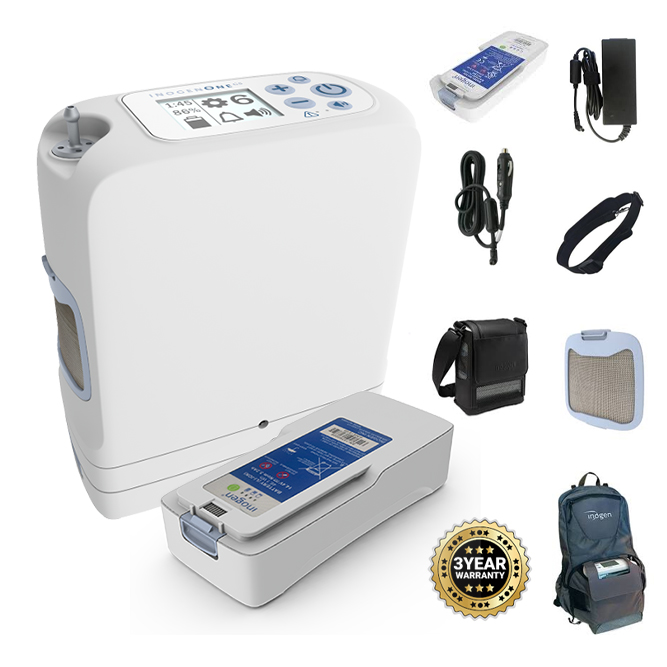
When it comes time to buy an oxygen device, you’ll have several options. Oxygen tanks, liquid oxygen tanks, and oxygen concentrators are all popular options. However, portable oxygen concentrators will be the best option for most oxygen patients because they’re lightweight, small, and easy to carry as you go about your day. The Inogen One G5 and Caire FreeStyle Comfort, for example, are two of the most popular options because they have a high oxygen output, and they both weigh under 5 pounds.
{{cta('fa8abc2a-1e88-4fa3-82fd-1cb5b9ed43b2','justifycenter')}}
Another great option if you have higher oxygen demands is the Respironics SimplyGo. This is the lightest continuous flow portable oxygen concentrator and it offers up to 2 liters per minute (LPM) of oxygen. The Respironics SimplyGo can either be carried on your shoulder with the adjustable strap, or it can be wheeled behind you using the rolling cart. Be sure to speak with one of our respiratory specialists here at LPT Medical to learn which portable oxygen concentrator is right for you.
Peripheral Edema
"Edema” is a term that refers to swelling, usually due to the buildup of fluid. Peripheral edema occurs when fluid begins to accumulate in an extremity away from the heart such as the hands, feet, or legs. While this condition can happen to anyone, it’s more common among COPD patients and it can be a warning sign of several serious medical conditions including pulmonary hypertension (high blood pressure in the lungs) and cor pulmonale (right-sided heart failure).

Another problem that can be caused by edema is problems with balance and coordination. This condition often develops slowly and without the patient knowing, so you might start losing control of your balance without knowing it as well. Oftentimes, people first notice that there’s a problem when their shoes or clothing don’t fit anymore. In order to avoid this situation, check your legs and feet daily for swelling, redness, or pitting. This is when you press your skin and it leaves an indentation.
Malnutrition
COPD patients are more likely to experience malnutrition than the general public. There are many possible reasons for this, but a loss of appetite, changing food preferences, and problems with digestion are among the most common causes. COPD patients often find themselves in a difficult situation where they’re hungry but aren’t in the mood to eat because it can leave them feeling bloated and exhausted.
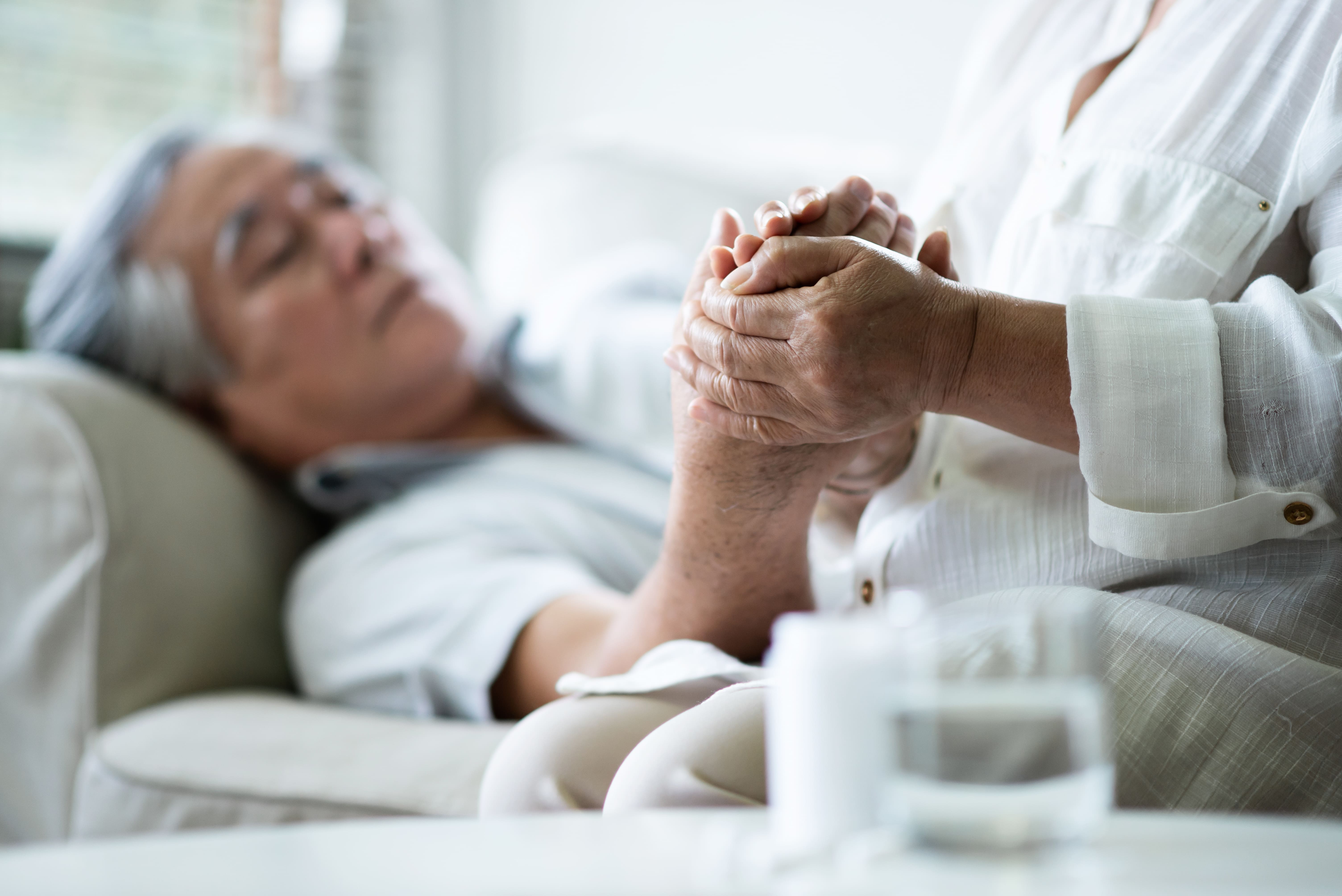
One significant concern is something called muscle atrophy (muscle wasting). Many people are under the impression that they’re losing fat, but it’s actually muscle weight that they’re losing. Inevitably, this can lead to problems with balance, coordination, and exercise tolerance. This is why it’s so important for COPD patients to consume enough protein. Today’s Dietician recommends you get at least 20 percent of your calories from protein.
Medication Side-Effects
Every medication has side-effects, including those used to treat COPD. One of the most common inhaled COPD medications, bronchodilators, are used to open up the airways helping you to breathe easier. However, bronchodilators have a number of adverse side-effects including but not limited to trembling, muscle cramps, and nausea, all of which can contribute to balance problems and even result in serious falls.
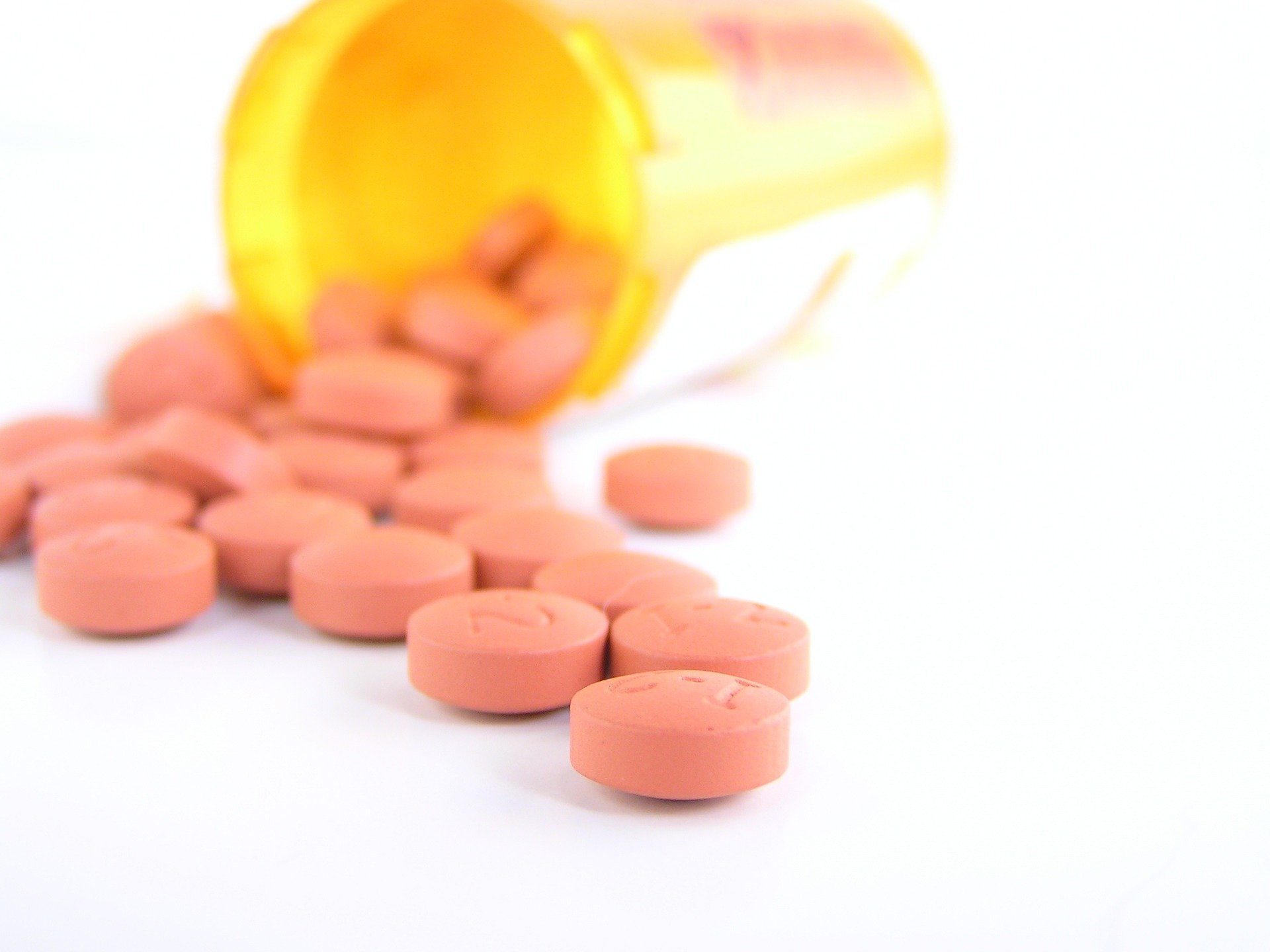
Just like with oxygen, it’s important to use medication only as it’s prescribed by your doctor. What’s more, you should be cautious about the way you use it. For example, if you’re using a bronchodilator, try sitting down beforehand. This way, if you start feeling dizzy or lightheaded, you won’t run the risk of falling down. Bronchodilators are fast-acting, so if you feel okay after a couple of minutes, you can stand up and go about your business.
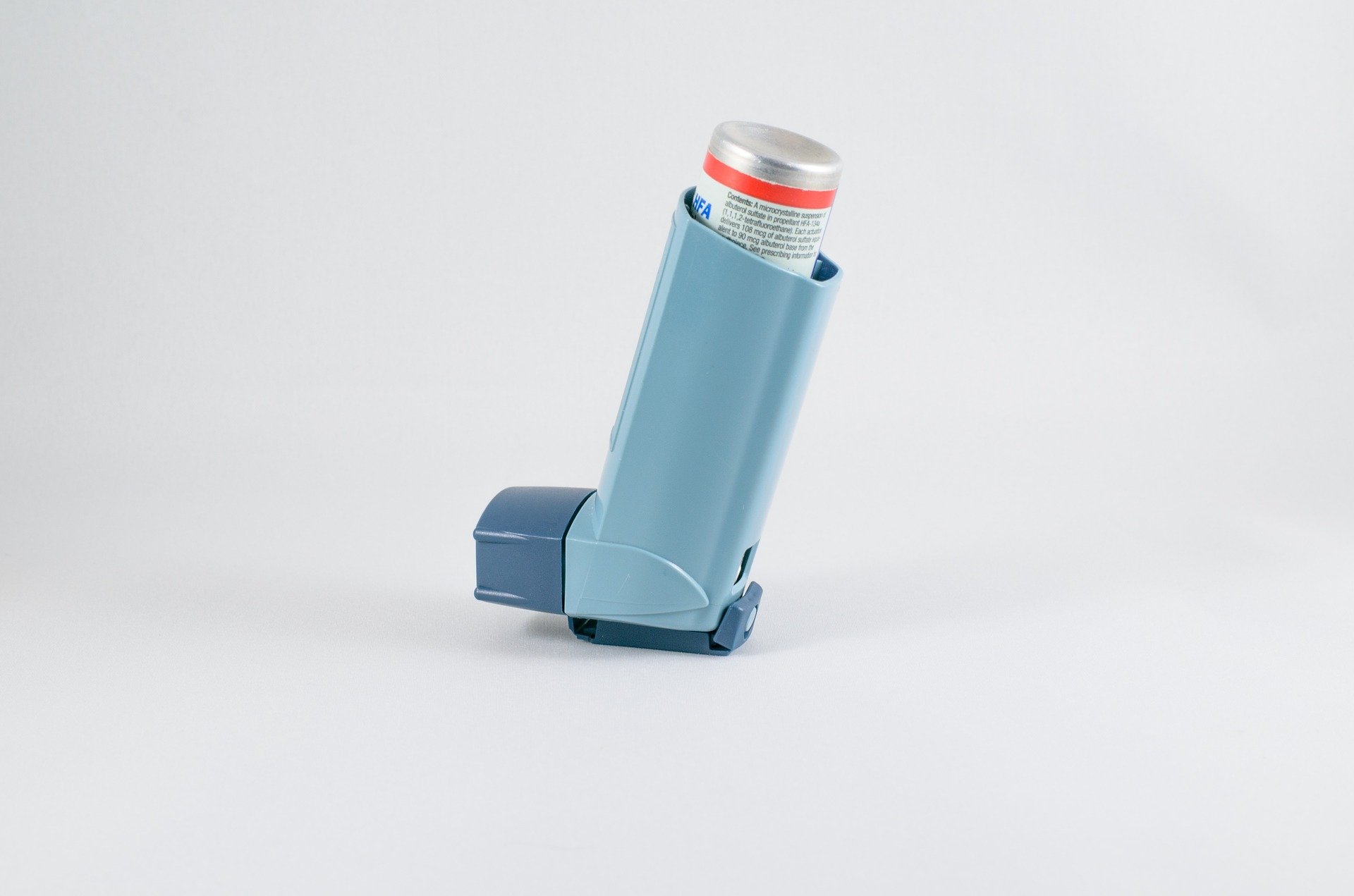
Corticosteroids are another popular medication used to treat COPD. These are a type of steroid that is used for the long-term treatment of COPD and asthma, and they help to reduce inflammation and tightening in the airways and lungs. However, corticosteroids used in large doses can contribute to bone deterioration and the development of osteoporosis. This condition not only increases your risk of falls, but it also increases your risk of experiencing bone fractures after falling.
Sedentary Lifestyle
Living a “sedentary lifestyle” means not getting up and moving around very often. Many people become more sedentary the older they get and developing a chronic condition like COPD can cause someone to become sedentary as well. The problem with this is that it can lead to a lot of health issues, one of which is an increased likelihood of experiencing a fall. This study found that physical activity is associated with better balance and slowing the rate of physical deterioration in older adults.

Environmental Factors
All of the issues above are caused by the symptoms of COPD and COPD treatment. But you also need to consider how your environment is contributing to your risk of falls. Living in a home that is cluttered or not designed to accommodate someone with a chronic respiratory disease can put you at a higher risk of falling.

Since it’s winter, there are also environmental factors related to the weather. According to the World Health Organization (WHO), 56 percent of all falls occur outside the home such as in the yard, on the sidewalk, or in a public area. So before you go anywhere, you should consider what obstacles will be presented and how you can navigate them safely without experiencing a fall.
{{cta('b59df0c1-c4de-47a8-8e1c-0d33d4b414aa','justifycenter')}}
What Can Be Done to Prevent Falls With COPD?
Although falls are very common in COPD patients, the good news is that they’re highly preventable. Just a few small adjustments to your lifestyle could make a huge difference but you need to know what’s causing them in the first place.
Carry a Pulse Oximeter
A pulse oximeter is a small electronic device that slips over your finger and tells you your blood oxygen levels. It is a non-invasive device, meaning you won’t need to draw blood in order to use it. It works by passing light through your finger and calculating your blood oxygen levels based on the amount of light that’s absorbed by oxygenated or deoxygenated blood. Pulse oximeters are lightweight and portable medical devices.
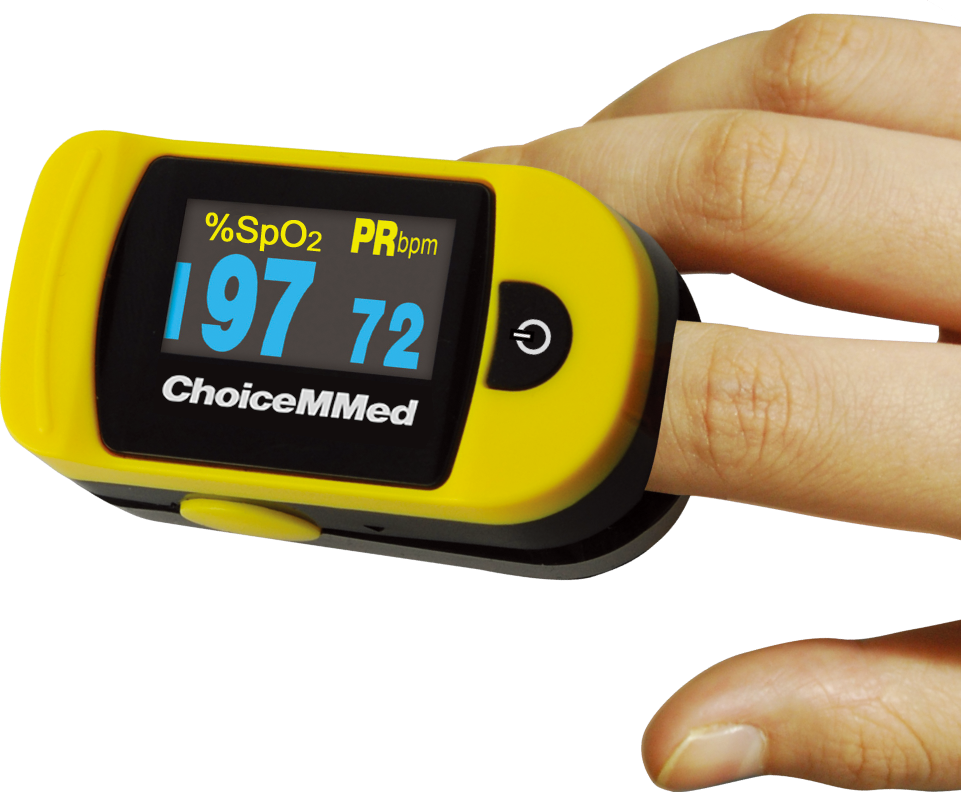
The reason it’s so important to have a pulse oximeter is to be able to check your blood oxygen levels and heart rate, especially when you’re away from home. Just a quick pulse oximeter reading and you’ll know exactly what adjustments you need to make to your oxygen therapy device. Pulse oximeters are usually recommended over arterial blood gas analysis (ABG) because they’re less intrusive and you receive your results almost instantaneously. The quality of the device matters too, so be sure to spend some time looking for a pulse oximeter with good reviews.

ABG analysis and pulse oximetry also differ in terms of the information they provide. While a pulse oximeter just reads the percentage of hemoglobin in the blood that is saturated with oxygen (SpO2), ABG tests will provide you with a whole host of information including blood alkalinity, the partial pressure of CO2 and oxygen (PaCO2 and PaO2), and much more. This information is useful for other reasons, but it’s not necessary if you’re just trying to maintain your blood oxygen levels.
Carry a Medical Alert System
A medical alert system or personal emergency response system (PERS) is a small device that’s worn around your neck or on your wrist. If you ever experience an emergency like a fall or a COPD exacerbation, simply press the button on the device and a notification will be sent to a 24/7 call center. Once the notification is received they will call 911 and emergency medical personnel will be sent to your home immediately.
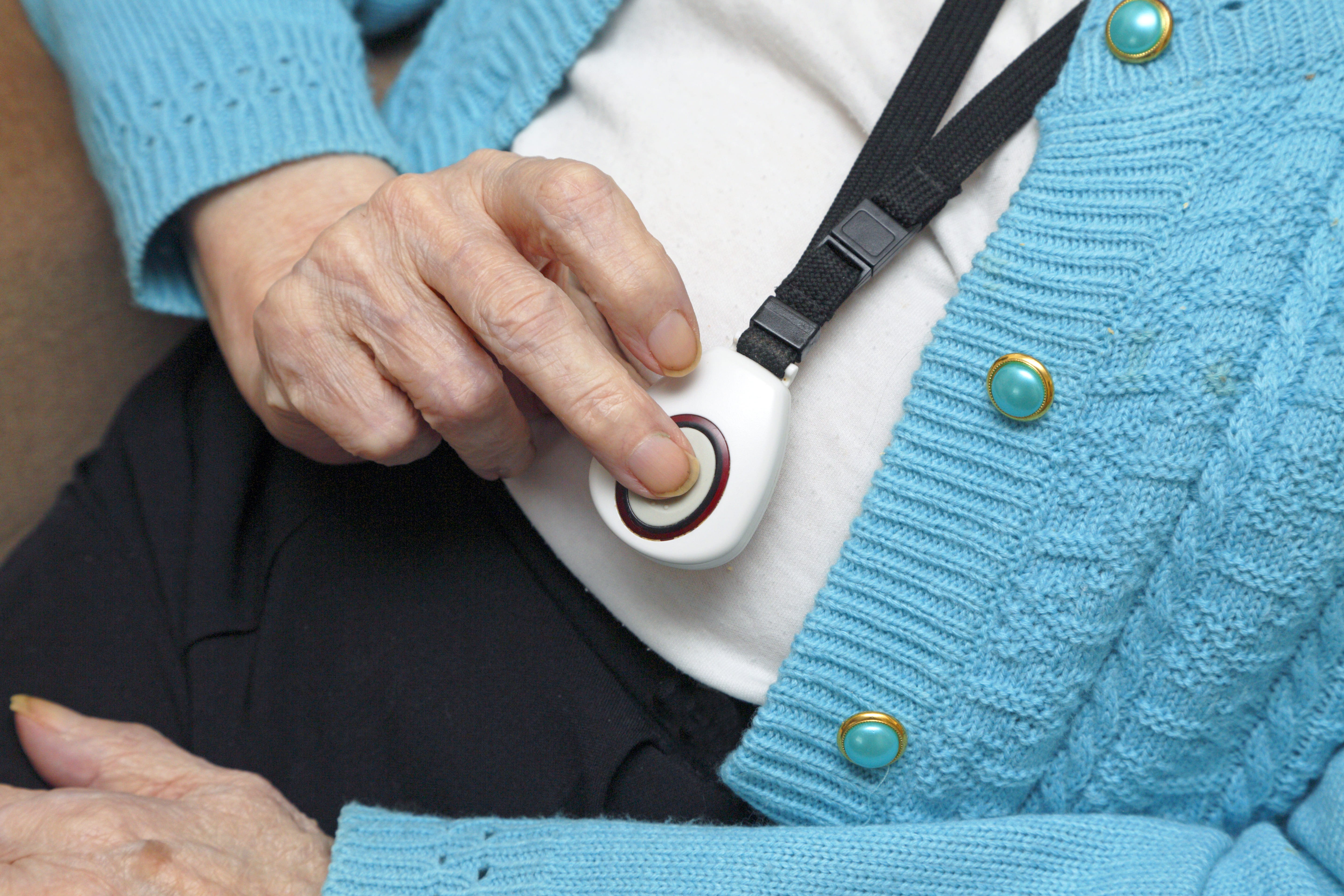
Adjust Your Eating Habits
As aforementioned, many COPD patients are underweight. As respiratory symptoms get worse, many people find it difficult to eat a full meal without feeling bloated and tired. One of the best ways to deal with this is to spread your meals throughout the day rather than having one or two bigger meals. This will give your body lots of time to digest rather than having to do it all at once.
![]()
Another reason to spread your meals out is that it helps you avoid the temptation to eat unhealthy foods. When you’re feeling hungry and lacking energy, you’re more likely to give in to foods that will provide you with a quick energy boost. These foods are usually high in sugar and other unhealthy ingredients which can exacerbate COPD symptoms and leave you feeling drained.
Get Active
Many people are under the impression that the sole purpose of pulmonary rehabilitation is to improve lung function. And while that may be the most important reason, it’s not the only reason. Even a moderate form of exercise can provide some major benefits as long as it’s done consistently. According to the Mayo Clinic, regular exercise helps prevent a whole host of health problems, including but not limited to high blood pressure, type 2 diabetes, depression, and heart disease.

Another reason for COPD patients to exercise is that it increases their muscle tone, thus increasing their oxygen efficiency. As a COPD patient, you want every muscle in your body to be strong not only to improve balance and posture but to reduce the amount of oxygen required for getting around. Exercise also improves blood circulation which is very important for maintaining your mobility.
Create a Safe Living Space
No matter whether you live alone or with friends or family, making adjustments to your living space can go a long way towards preventing falls. Keeping your home organized and free of debris will give you fewer obstacles to trip over or navigate around as you go about your daily life. Many falls occur in the bathroom, so that might be the best place to start with. Another way to create a safe living space is to install mobility aids such as hand railings, stairlifts, or ramps.

Address Your Concerns With Your Doctor
Anxiety is associated with an increased risk of falls, so if you have concerns about balance or coordination issues caused by COPD or your COPD treatment plan, you should address them with your doctor immediately. Chances are, the feelings you’re experiencing are perfectly normal and your doctor might be able to make changes to your medication, exercise, or diet plan in order to improve your balance. As the saying goes, there’s no such thing as a “stupid question” especially when your health is concerned.

Conclusion
Although COPD is a leading morbidity in the United States, many people are not fully aware of what it’s like to live with this disease. Balance and coordination issues are pervasive among COPD patients and they become more prevalent with age and as the disease progresses. The tips outlined above will help you mitigate the risks of falls.
Here at LPT medical, we want you to be educated about your disease so that you can make the best decisions for your long-term health. We carry a wide range of portable oxygen concentrators from popular brands like Caire Inc., Inogen, and Respironics. And we take pride in providing oxygen patients all over the country with reliable lightweight devices that help them get around more easily while limiting the risk of a fall.
If you’re interested in our portable oxygen concentrators for sale, please reach out to us either by phone or by email.
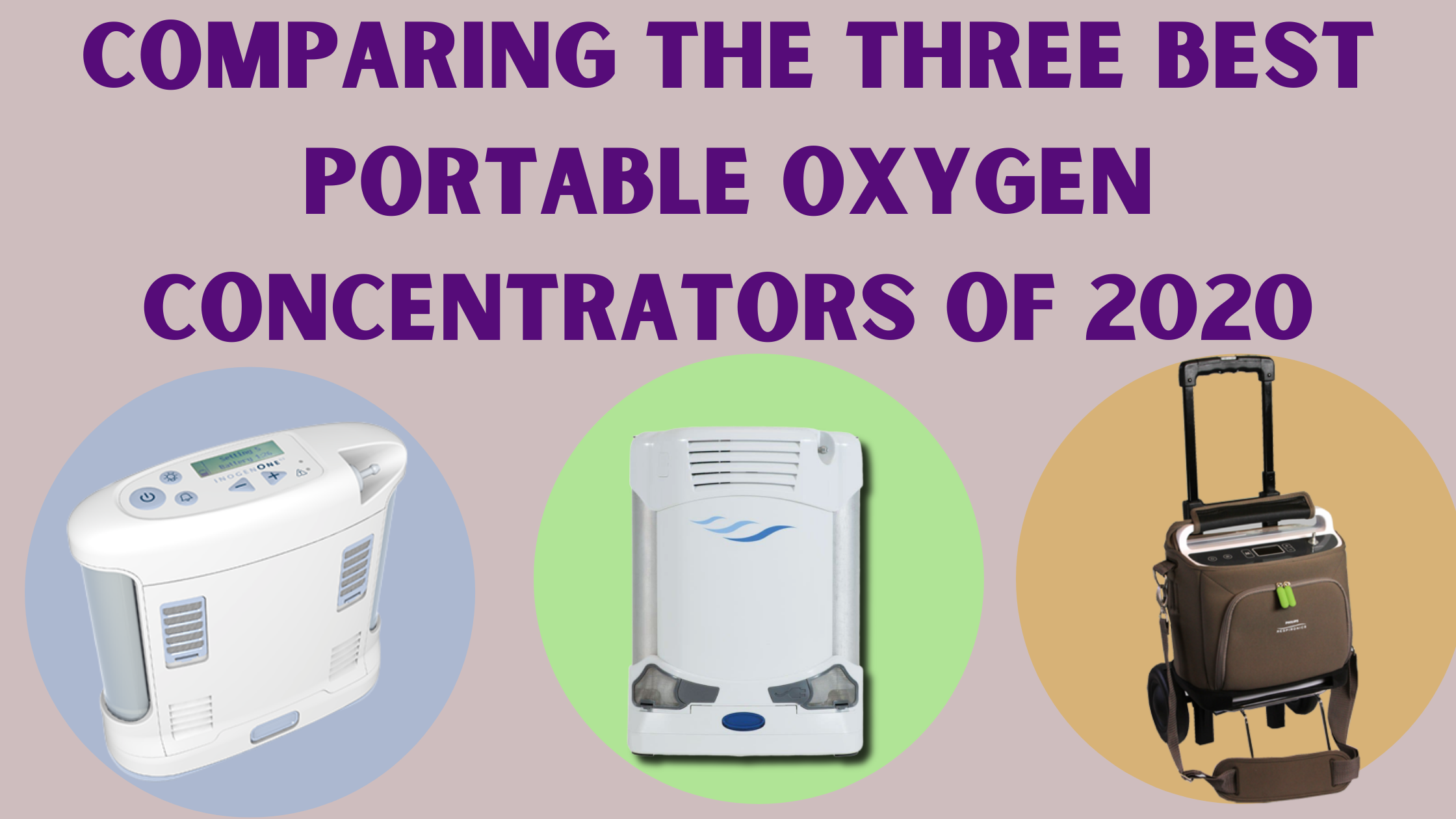
There are a few areas of focus that are great for comparing portable oxygen concentrators. However, people’s oxygen requirements vary from person to person, based on their pulmonary illness, severity, and their overall health. Then, there are other confounding variables like personal choices, daily lifestyles, and priorities that also vary from patient to patient and play a valuable role in your decision to buy a portable oxygen concentrator.
Because the information can be overwhelming at times, we created this unbiased informative guide that will help you gather all of the information you need about the Caire Freestyle Comfort, the Inogen One G5, and the Respironics Simply Go in order to make informed decisions about the devices.
Once you have a better idea of which device you are interested in, or if you have questions about the many other portable oxygen concentrators that we have to offer, you can reach us at 1-888-416-3855. We are here to help you make the most reliable and personal choice, so you feel confident in your decision.
To find links to our website please click here:



-png-1.png)
Think about your daily routine, it likely involves a number of different activities that range from resting, to moving around and doing chores, exercising, reading, and of course sleeping. If you are using oxygen therapy at home your oxygen flow requirements may vary from the morning to afternoon, from day to day, depending on the season. Even if you need oxygen all day and all night the rate at which you need oxygen may not be consistent.
If you have more severe symptoms associated with COPD or you have overlapping conditions that restrict the proper amount of oxygen getting through your lungs, you likely need a continuous supply of oxygen flow. This means that you need oxygen delivery from your oxygen concentrators to be constantly flowing, even if you are not taking a breath.
If you only sometimes need a continuous flow of oxygen, for example, at night time while you sleep or during exercise, and during the day while doing less strenuous activities you only need pulse flow oxygen, you have the option for one device that meets all of your oxygen requirements no matter what time of the day or night.
It is also important to note here that you should be weary of where you are purchasing a oxygen concentrator, and if you are not going through a authorized dealer, you will get a machine that does not give you medical-grade oxygen, and it will not operate correctly.
{{cta('43b79c5e-6bd6-4f02-ac27-2d038d20c146','justifycenter')}}
The Respironics SimplyGo: Continuous Flow Oxygen Concentrator Designed for 24/7 Use
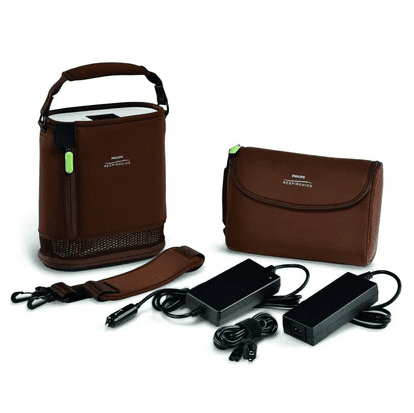
Here are all of the major advantages of owning or renting a continuous flow portable oxygen concentrator designed for 24/7 like the Respironics SimplyGo:
1. It is light-weight and portable
A continuous portable oxygen concentrator like the Respironics SimplyGo is the first continuous flow portable oxygen concentrator under 15 pounds, weighing in at only 10 pounds! Making it the most portable option for oxygen users who need continuous oxygen flow or who need both pulse flow and continuous flow.
This concentrator offers pulse flow settings 1-6 and its continuous flow settings range between 0.5-2.0 LPM
So just how portable is this unit?
The SimplyGo will easily fit underneath the seat in front of you on an airplane, you can store it on the floor of your car or in the passenger seat as you drive. When you don’t need to use it, you will be able to put it in your closet without having to clear space for it.
10 pounds is extremely light for a continuous flow portable oxygen concentrator, however it can still be pretty heavy to carry. That being said, the SimplyGo package includes a custom carrying case and a wheeled travel cart so you have the option to carry it over your shoulder and switch between pulling it behind you on a travel cart.
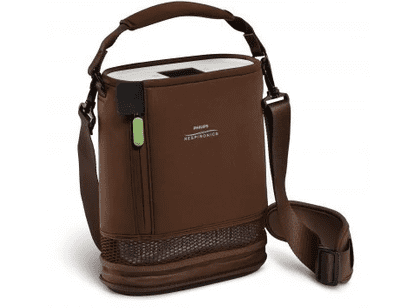
2. You’ll never have to worry about renting a concentrator when you travel, because your own can travel safely with you.
Before you travel, you should acquire your doctor’s clearance and advice, if you are traveling to high-altitudes (Denver, CO) or a place with low air quality (Los Angeles, CA or Salt Lake City, UT) you doctor should advise you on the proper oxygen flow setting your POC should be set to.
If you Invest in a Portable Oxygen Concentrator you will be allowed to travel with your oxygen device whereas oxygen tanks and liquid oxygen aren’t allowed on planes. Be sure to contact your airline in advance to tell them you’ll be traveling with oxygen and to learn their individual policies.

Look around at different airlines and consider different policies because some airlines may provide supplemental oxygen and some may require you to book a second seat for your equipment.
When you are traveling, carry your prescription to provide proper documentation about your condition.
If you can, try to get a seat with access to a power outlet in case your batteries need to be charged. Or you can fully charge your batteries before leaving and carry a backup with you. Contact your doctor to see if you’ll need to increase your supplemental oxygen as your plane reaches higher altitudes.
3. SimplyGo is CPAP/BiPAP compatible
Adding oxygen to your CPAP/BiPAP therapy is a simple procedure. However, it is necessary to speak with your doctor to ensure you are properly operating the devices together.
It is imperative that you understand and can manage your symptoms and the severity of your disease, by being fully familiar with all of your treatments and therapy delivery methods.
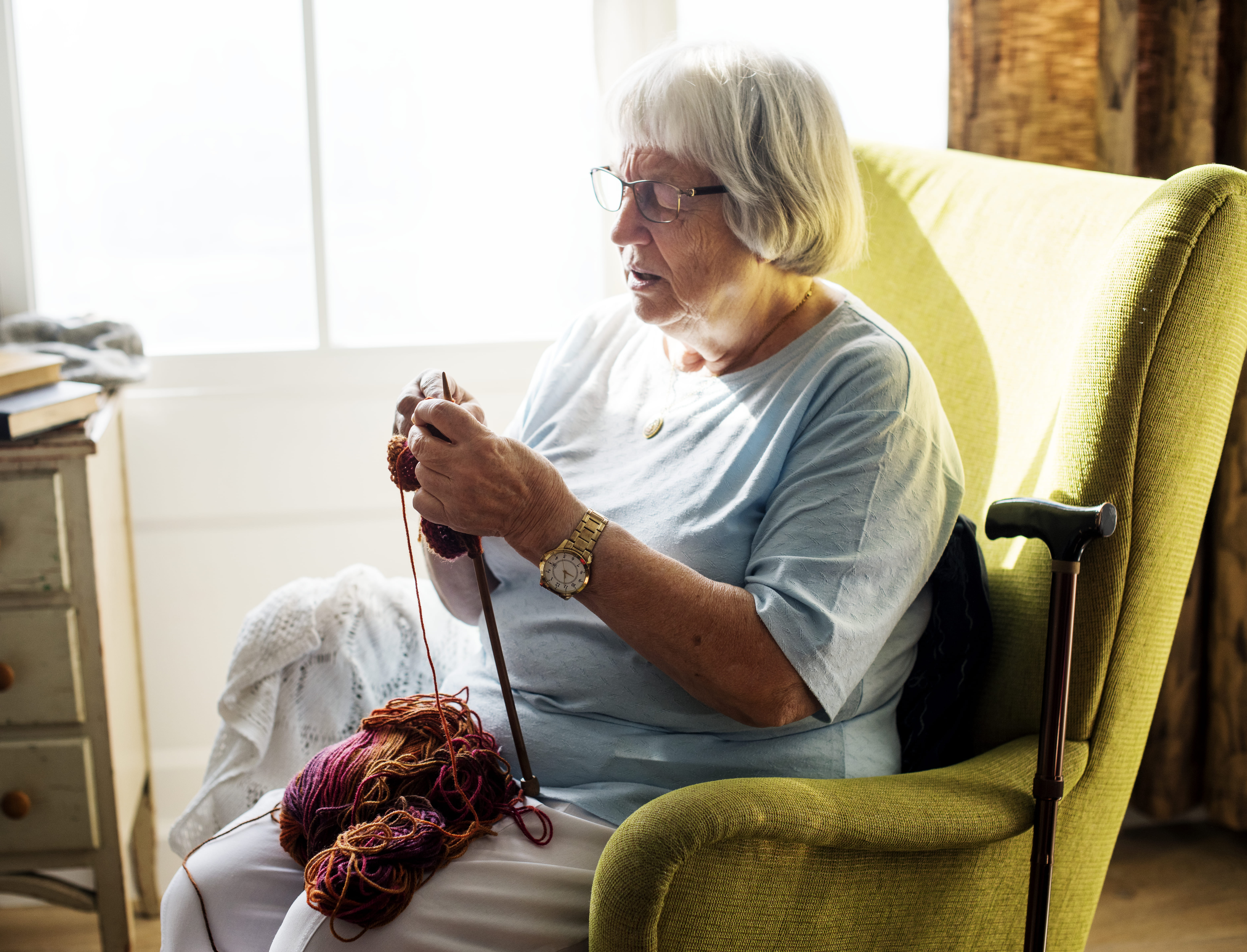
4. Strong pulse flow settings and continuous flow settings
You SimplyGo is equipped with both pulse flow and continuous flow oxygen delivery modes to cover you 24/7.
Until the SimplyGo, you could not get a continuous flow unit under 17-20 pounds and it still has the ability to offer pulse flow and continuous flow. So this unit can manage all of your needs.
It offers pulse flow settings 1-6 and continuous flow settings 0.5-2.0 LPM. LPM is an abbreviation that stands for: litres per minute (l/min). When used in the context of a portable oxygen concentrator flow rate, it measures the velocity at which air flows into your lungs. For example, a flow rate of 2.0 LPM means you concentrator will give you 2.0 liters of air per minute.
5. Its compressor is rated to last 20,000 hours
You can rely on SimplyGo as a long-term investment that will operate far beyond the time you begin saving money on re-filling and the maintenance for you oxygen tank. Not to mention the 3-year-warranty that comes with it!
With less maintenance costs, and no re-filling costs, you will being to relish in the financial savings associated with purchasing a POC. And after adjusting to life with a POC, you will also enjoy the social benefits and freedom you gain for a lifetime!

6. The SimplyGo offers sleep mode technology
Whether you’re on resting on an airplane or relaxing in your living room at home, as soon as you begin to doze off, you can turn on the sleep mode technology on your SimplyGo to ensure your oxygen gets delivered while you are sleeping.
When you turn sleep mode technology on your SimplyGo, it increases the sensitivity to detect your breath, and it softens the pulse flow delivery so it doesn’t wake you up. If your SimplyGo doesn’t detect a breath or if you breathe through your mouth it will automatically switch back over to continuous flow to ensure you get your required oxygen.

7. It can operate while you are using 1 or 2 batteries
The Respironics SimplyGo gives you the ability to operate it using one or two batteries by utilizing the optional external battery module.
One battery will be perfect for things like exercising, running quick errands, and doing things around your home. If you are utilizing the continuous flow setting the battery can last anywhere from 1-3 hours depending on the rate at which you are getting oxygen. By utilizing the pulse flow setting, the battery will last longer, about 1.3 hours - 3.4 hours.
Using two batteries is ideal for traveling, road trips, and extended trips away from your home.
8. You can charge the batteries in three different ways depending on where you are and what you are doing.
Recharging your Respironics SimplyGo batteries is convenient and easy and you have three options to choose from:
- AC Power Supply
- DC Power Supply
- External Battery Charger (Optional)
The AC and DC power supplies are included with your package while the external battery charger is an optional accessory. With these charging options you can recharge your batteries anywhere!
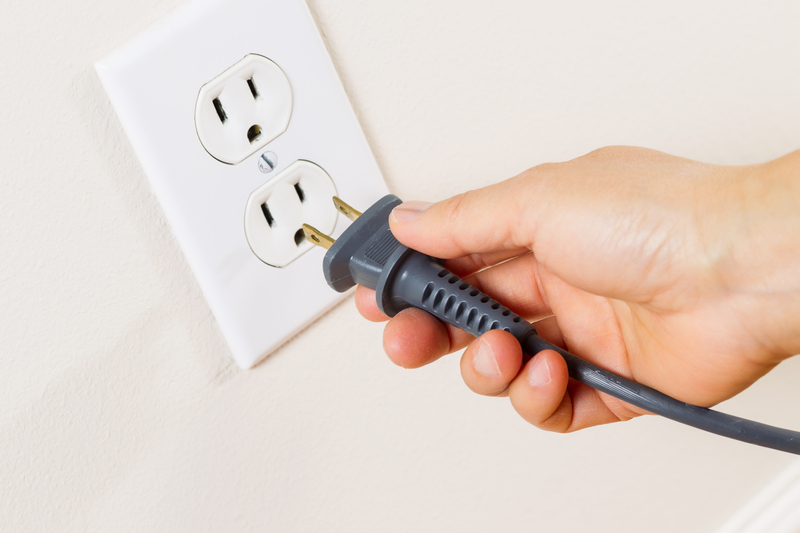
9. It is reliable and easy to depend on the battery life of the Respironics SimplyGo
The AC power supply is what you will use to plug your deceive into the wall outlet in your home or if you're traveling in your hotel room or cruise ship room. It is equipped with a 110v power cord and you can use your SimplyGo on every oxygen setting while it is plugged in.
In fact, the AC power supply essentially turns your SimplyGo into a home oxygen concentrator. As long as your SimplyGo is plugged into the AC power supply it will give you an endless supply of oxygen!
The DC power supply gives you the ability to power your SimplyGo and recharge your batteries on the go! It is equipped with a 12v power cord allowing you to plug it into the 12v outlet or cigarette lighter in your car, truck, boat, or RV.
Unlike some of the other continuous flow portables on the market, your Respironics SimplyGo will be able to operate on every oxygen setting while you are recharging your batteries with the DC power supply. Just remember to turn your vehicle on before you plug your SimplyGo into the DC power supply. This will prevent you from blowing a fuse or draining your vehicle’s battery.
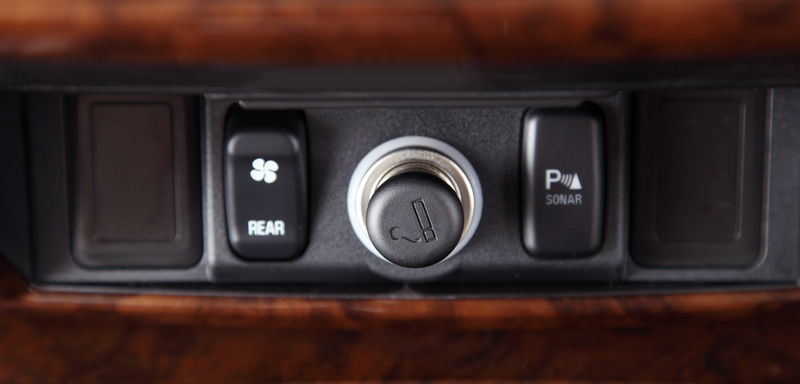
The Respironics SimplyGo also has an external battery charger that gives you the ability to recharge your batteries without plugging your concentrator into the AC or DC power supplies. It’s a single-bay charger and recharges one battery at a time. It’s equipped with a 110v power cord allowing you to plug it into any 110v wall outlet.
The external battery charger also has the ability to recalibrate your batteries! If you ever feel like your batteries aren’t holding a charge like they used to, simply recalibrate them on your charger.
{{cta('fa8abc2a-1e88-4fa3-82fd-1cb5b9ed43b2','justifycenter')}}
10. Peace of mind
There is a sense of peace of mind that you will gain by having one oxygen device that can handle all of your needs.
Simplifying your life has been proven to increase well-being and mind fullness. This means that de-cluttering your brain can improve your quality of life, and give you room to enjoy things you once did.
There are a lot of things to worry about when you have COPD or any chronic illness, so it is imperative that you minimize worrying about your oxygen supply.

The Respironics SimplyGo portable oxygen concentrator will not only help you breath all day everyday, it will give you the peace of mind you need to enjoy life to the fullest.
You do not have to be tethered to an oxygen tank that you cannot fly with, you can not carry easily to play a few holes of golf, and you must spend time and money each week paying for a company to come and refill or replace your tank.
Instead you can change your concentrators batteries anytime anywhere, adjust the flow settings to match your activities with ease, take it on vacations to visit your family, and be conformable carrying it around or wheeling the 10 pound device with you everywhere you go!
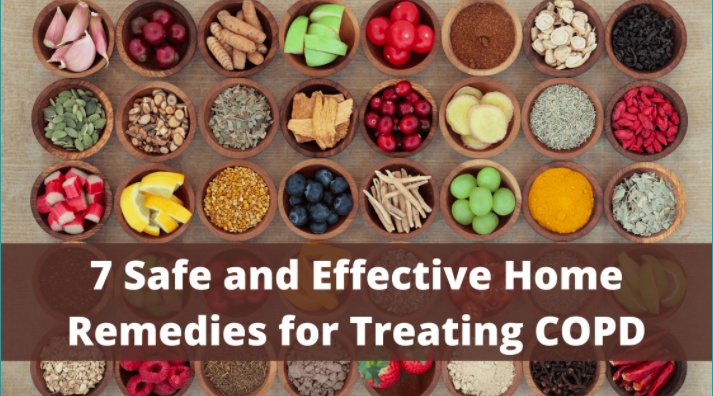
Managing chronic obstructive pulmonary disease (COPD) can feel like a balancing act a lot of the time. On one hand, you want to do everything you can to reduce the symptoms and prevent the progression of your disease. However, on the other hand, you don’t want to use any treatments that could cause serious side-effects. It’s not always easy to find a balance between these two things and create a routine that works for you.
This has never been more true than with home remedies. Simply put, a home remedy is an easy and accessible treatment option for an ailment that you can do at home. Home remedies are not prescribed by a doctor and they typically have more anecdotal evidence to prove their efficacy than hard scientific fact. What’s more, home remedies aren’t always focused on treating a specific disease like COPD. Instead, they could be focused on improving your health in general which, in turn, could help you treat your COPD.
{{cta('fa8abc2a-1e88-4fa3-82fd-1cb5b9ed43b2','justifycenter')}}
Rather than taking a risk with home remedies you may find on social media or elsewhere on the internet, we’re going to outline some COPD home remedies that are proven to be safe and effective. Just remember that home remedies should never be put before the treatment plan prescribed by your doctor including but not limited to supplemental oxygen therapy, pulmonary rehabilitation, and an improved diet. As always, if you have any questions about what you read here, don’t hesitate to leave a comment and we’ll get back to you as soon as possible.
Dietary Supplements
Dietary supplements are commonly misunderstood in today’s world. Many people are under the impression that dietary supplements can replace a healthy diet and others are convinced that dietary supplements do nothing at all. However, the truth is somewhere between these two points of view. Supplements can potentially enhance your diet, but there are also a few things you need to be aware of in order to use them safely.
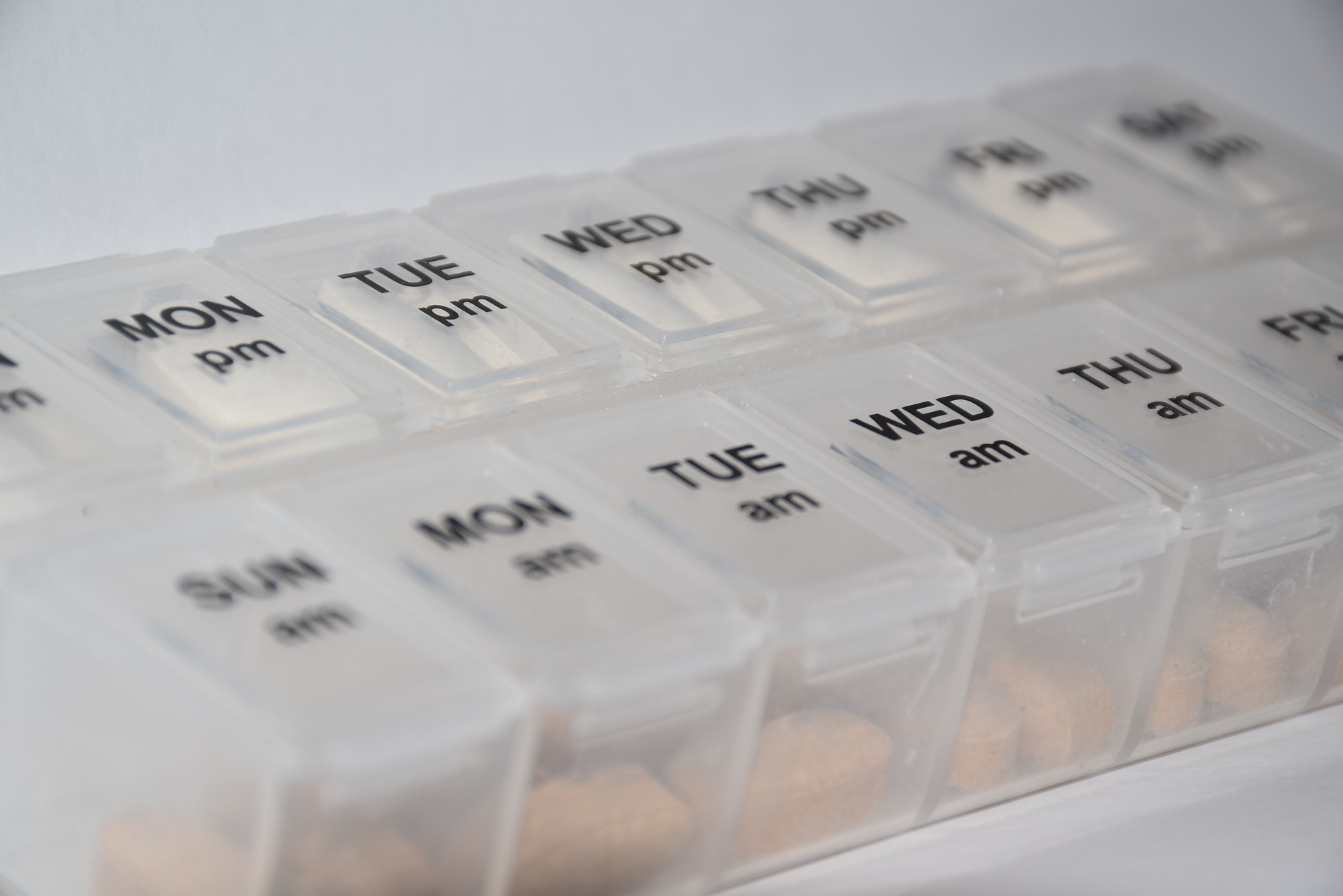
Dietary supplements are not considered “medication” by any means. In fact, the Food and Drug Administration (FDA) classifies them as a “food product.” The good news is that this means they are widely available and you won’t need a prescription in order to buy them. But the bad news is that supplements are not regulated the same way as medication. It also means you’ll have to do your due diligence and research supplements, as well as the company selling them before you make any commitments.
Vitamin D Supplements
It’s a well-known fact that many people develop vitamin D deficiency after contracting COPD. According to the National Emphysema Foundation, over half of all COPD patients develop vitamin D deficiency because they consume fewer foods that are high in vitamin D and they are less likely to spend time outside in the sunlight which is a major source of vitamin D for many healthy people.

The main problem associated with vitamin D deficiency is osteoporosis, a condition where the bones become weak and brittle. Vitamin D plays an important role in the absorption of calcium which gives the bones their structure and strength. Vitamin D also plays an important role in the growth and function of muscles which is also very important for COPD patients.
Ginseng
Ginseng has a long history of use in Chinese medicine. It’s an herb that’s believed to improve pulmonary function as well as respiratory endurance. It’s known for both its antioxidant and anti-inflammatory effects as well as being able to regulate blood sugar levels. While the benefits of ginseng look promising, it’s important to discuss with your doctor before using it because it’s known to interfere with certain COPD medications.

N-Acetylcysteine (NAC)
This is an antioxidant supplement that’s shown potential when it comes to thinning mucus, reducing phlegm, and clearing the airways. Like ginseng, NAC is a widely available supplement that can be bought without a prescription. However, it is also known to interfere with certain medications, so it’s important to consult with your doctor before using it to treat your COPD.
Smoking Cessation
The vast majority of people who have COPD have smoked in the past and about 38 percent of current COPD patients are also smokers. Many people believe that, since they’ve already contracted COPD, there is no reason to put in the effort to quit smoking. But this could not be farther from the truth. The main reason to quit smoking is to slow the progression of COPD, but there are a whole host of other reasons as well.

Smoking increases your risk of conditions like heart disease, heart attack, diabetes, and more. What’s more, current evidence suggests that smoking is associated with increased severity of disease and a higher likelihood of death in COVID-19 patients. Smokers are known for having impaired immune systems which could also put you at a higher risk of contracting respiratory infections.
While there are many prescription medications you can use to quit smoking such as Chantix or Zyban, there are also many natural methods for quitting smoking. One thing you should know about smoking and other types of addictions is that you need it in order to feel normal. If you’re deprived of it for too long, you will likely start to experience feelings of withdrawal. When this happens, you’ll experience intense cravings, along with headaches and a change of mood. This is when you’re most likely to fall back into your smoking habits.
In order to avoid these intense feelings, you may have to slowly wean yourself off cigarettes or use a common technique like nicotine replacement therapy. Unfortunately, many smokers feel like they’re up against impossible odds when it comes to smoking cessation. Maybe you’ve seen others around you fail at losing cigarettes or you just don’t feel like you have it in you. But the truth is, it takes many attempts to quit smoking. This study suggests that it could take anywhere between 8 and 14 attempts to drop a smoking habit for good.
Cleaning Your Home
For most people, cleaning the house is a chore. But for someone with COPD, it can be a lifesaver. There are two reasons you should clean your home on a daily basis: first and foremost, it helps to eliminate airborne allergens and bacteria from your home, and secondly, cleaning is a therapeutic activity that helps you feel accomplished and whole. When your living environment becomes messy or dirty, you’re far more likely to experience issues like anxiety and depression.

Before you start cleaning, you need to make sure you’re using safe cleaning products that don’t contain dangerous chemicals that could exacerbate your respiratory problems. Unfortunately, the cleaning product industry is rife with hazardous chemicals that, if inhaled, can lead to coughing, wheezing, chest pain, shortness of breath, and even permanent lung damage. In COPD patients, inhaled chemicals can even cause severe exacerbations.
Volatile organic compounds (VOCs) are some of the most common hazardous materials you should keep an eye out for. Some common personal and home care items that include VOCs are:
- Disinfectants and cleaners
- Pesticides
- Air fresheners
- Deodorant and cosmetics
- And fuel
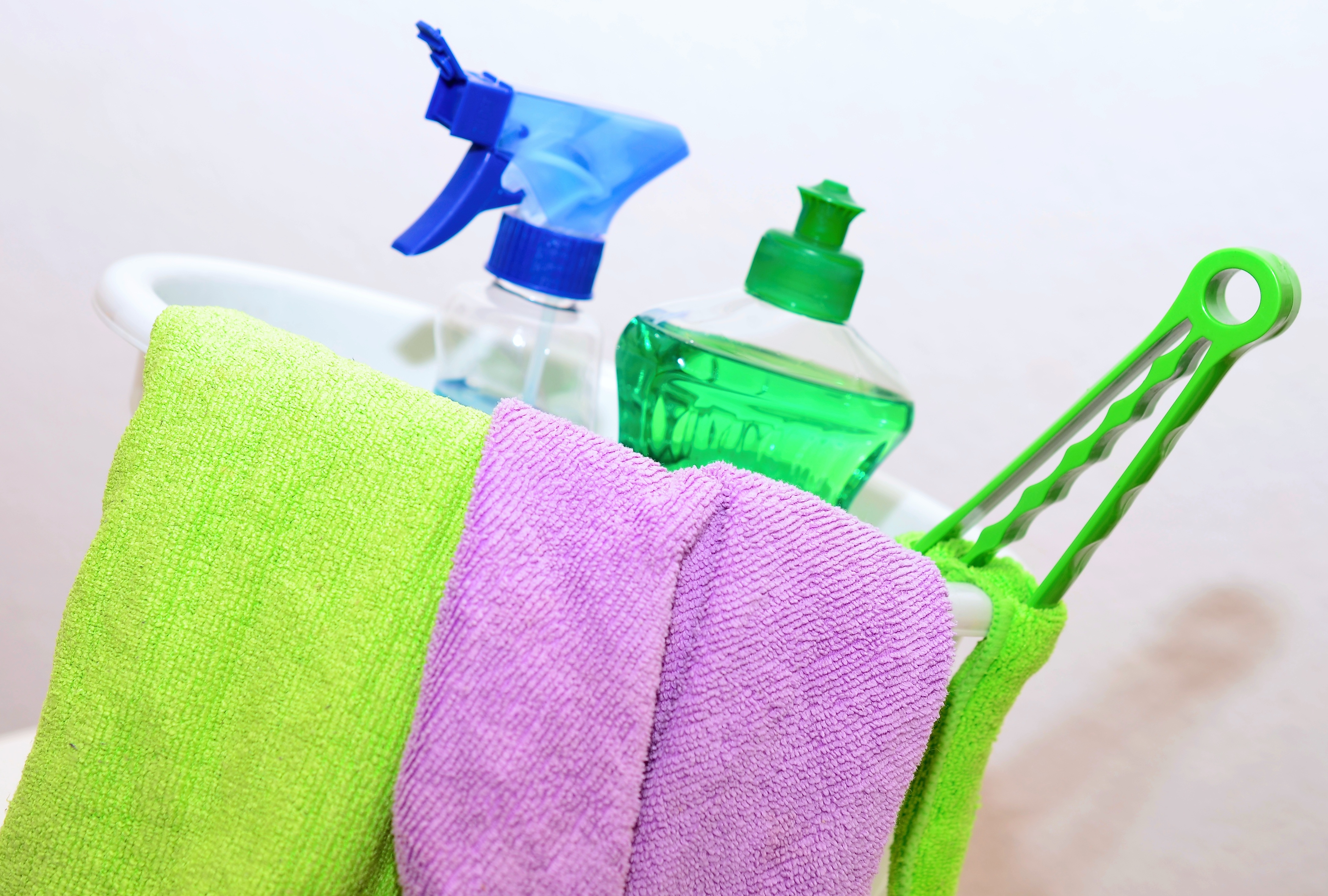
Other hazardous things in cleaning products include bleach, ammonia, ethylene glycol, monobutyl acetate, sodium hypochlorite, and trisodium phosphate. If at all possible, you should entirely avoid using cleaning products with these chemicals in them. However, if you absolutely have to use them, you should ensure that the room is well-ventilated, you should always wear a mask, and avoid getting the cleaning product on your hands or near your eyes or mouth. Refer to the Cleveland Clinic for more information on cleaning safely if you have COPD.
Breathing Exercises
Breathing exercises may seem silly to someone who has never tried them. However, the more you look into them, the more you begin to realize the bad breathing habits people develop over the course of their life. As a society, we spend more time sitting and remaining sedentary than ever before. This has caused many people to develop a shallow, ineffective breathing method that can be dangerous for someone with COPD or other respiratory conditions.
Breathing exercises are very easy to practice in the comfort of your own home and they are the perfect thing to incorporate into your daily routine. Not only will breathing exercises help you correct bad breathing habits, but they will also teach you how to reduce and manage anxiety more effectively.
.jpg)
One of the worst habits for COPD patients to develop is chest breathing. This type of breathing is focused on using the chest muscles in order to expand the lungs which can be exhausting with inflamed and obstructed lungs. Chest breathing should be replaced with diaphragmatic deep breathing which is focused on using the diaphragm, the thin sheet of muscle above the stomach to expand the lungs.
Anxiety Management
Cleaning regularly and practicing breathing techniques are both great ways to reduce anxiety, but they aren’t the only ones. The tricky thing about anxiety, depression, and other mental health disorders is that they can be triggered by just about anything. Some people may experience anxiety about their health whereas other people may experience anxiety for reasons that are purely biological.
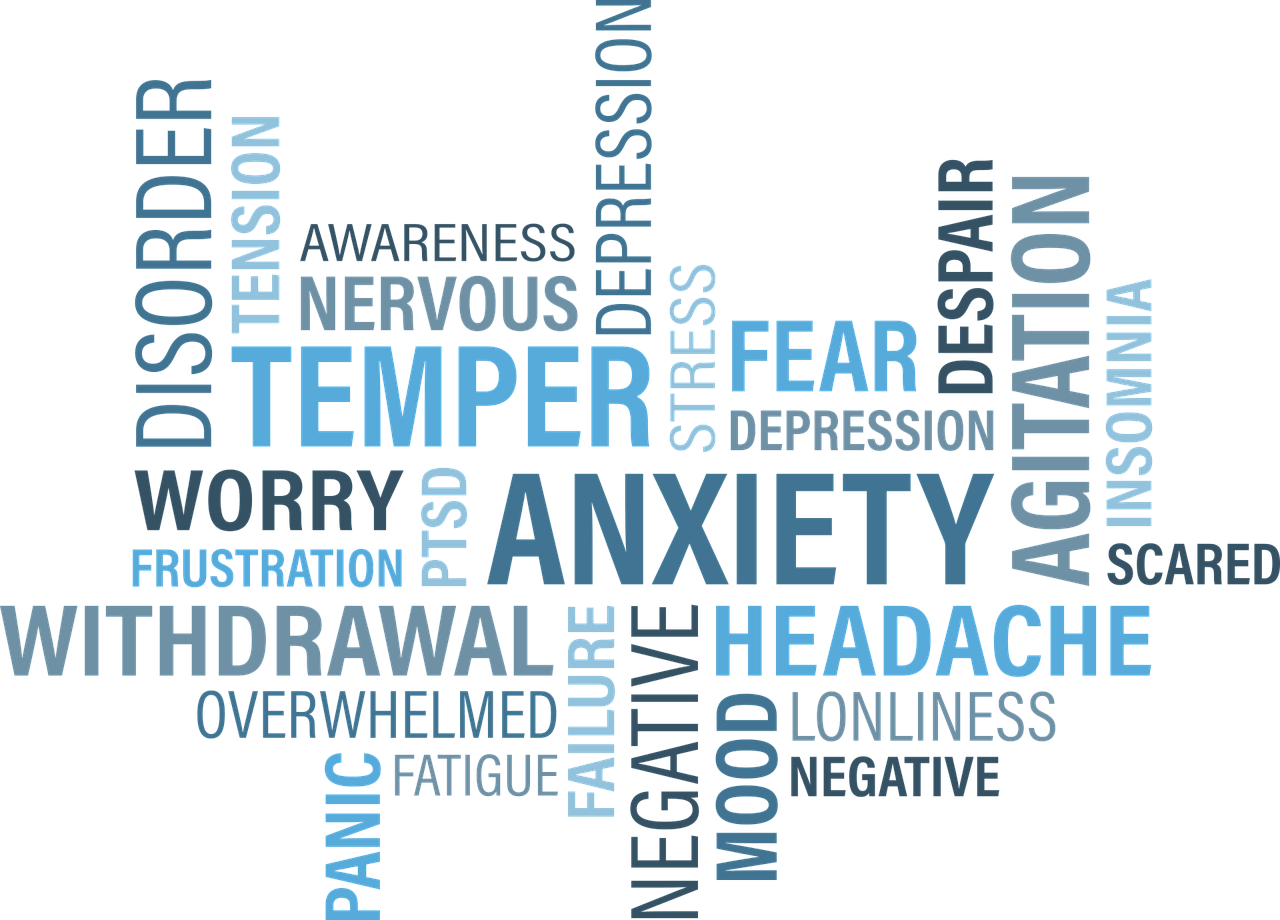
The first step to preventing anxiety is to simply follow your treatment plan as closely as possible. Your treatment plan is designed with your long-term well-being in mind and that includes your mental health. Things like exercise and a healthy diet will help with full-body wellness and they’re always the first things you should commit to if you want to feel happier and more motivated. If you’ve tried all of this and you’re still experiencing anxiety, cognitive behavioral therapy (CBT) is the best alternative.
Weight Management
COPD is commonly linked with weight loss. Due to the increased energy that it takes to breathe with COPD, a changing immune system, and other factors like a loss of appetite, many COPD patients find themselves losing an unhealthy amount of weight. Oftentimes, this weight can be muscle mass rather than fat which is the most dangerous part about it. Your body needs muscle strength in order to breathe and get around more efficiently, so it’s very important to keep a healthy weight with COPD.

Weight management is something that can be done at home. Your doctor has likely set you up with a new diet plan that includes high protein, fiber, and healthy fats. You should follow this plan as closely as possible. What’s more, you should eat regularly throughout the day instead of eating one or two big meals each day. This will prevent you from feeling exhausted or bloated after eating and keep your energy levels stable throughout the day.
![]()
The second thing you should be aware of is your exercise routine. Pulmonary rehabilitation isn’t just designed to keep your lungs strong, it’s also important for helping you manage your weight by keeping fat off and muscle on. Like your diet, the most critical thing with pulmonary rehab is consistency so try to incorporate fitness into your daily routine.
Healthy Sleep Habits
Your sleep/wake cycle doesn’t just affect your alertness throughout the day, it also affects your energy levels and your ability to take on the challenges that COPD presents. For example, someone with a healthy sleep schedule will have a better mental attitude and a better willingness to make lifestyle changes that will positively impact their respiratory health. A poor sleep schedule can also contribute to anxiety which can further exacerbate COPD.
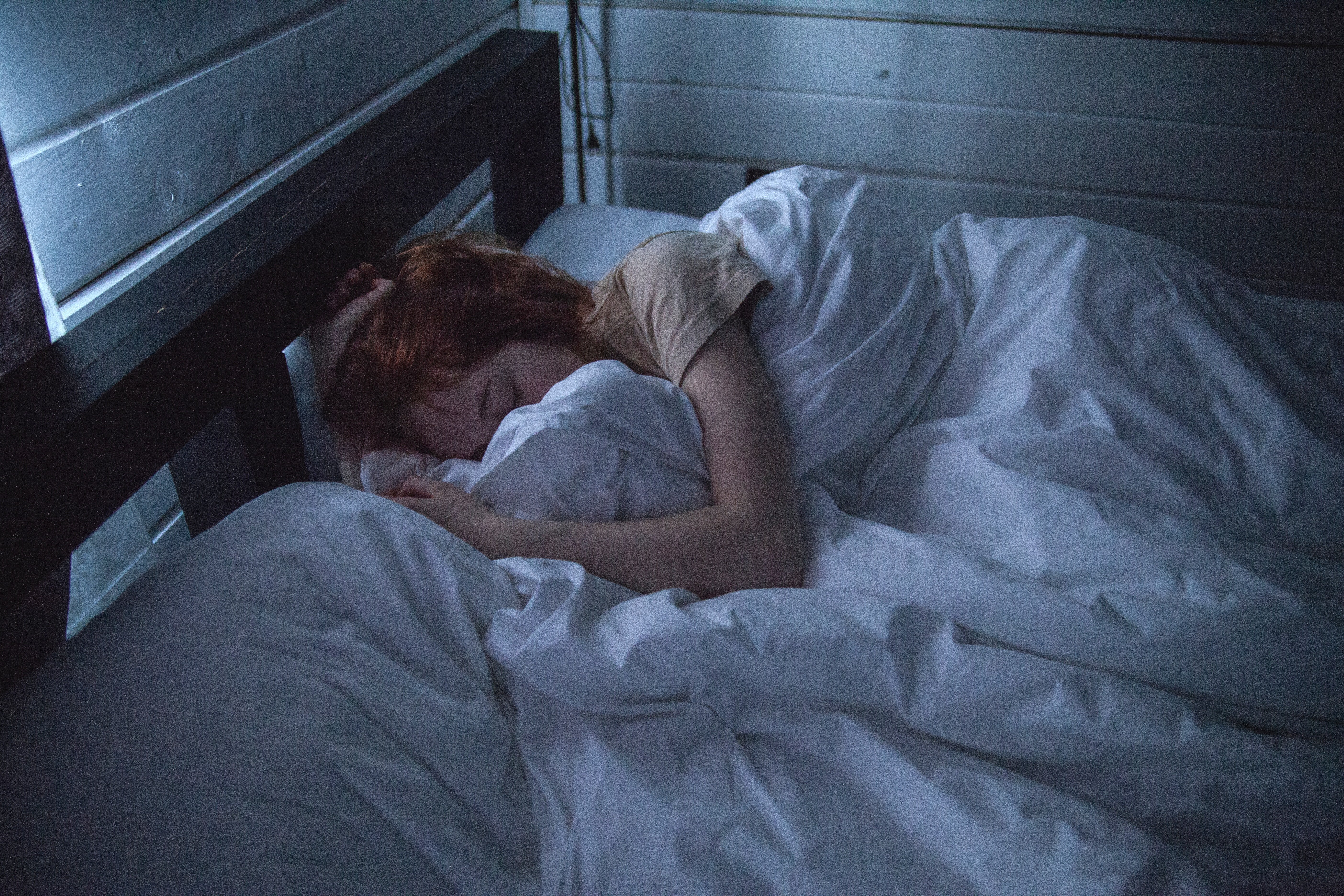
The key to a healthy sleep schedule is consistency. Adults should be getting between 7 to 9 hours of sleep each night and your sleep schedule shouldn’t vary night-to-night. Try to get to bed and wake up at the same time each day. Doctors also recommend avoiding naps throughout the day, getting plenty of exercise, and avoiding using electronics before you go to bed.
If you’re concerned that you’re losing sleep at night due to low oxygen levels, you may want to speak with your doctor about using supplemental oxygen therapy while you sleep. You are likely already on some form of oxygen therapy, but using an oxygen concentrator while you sleep will ensure that your blood oxygen levels remain stable throughout the night. Portable oxygen concentrators like the Caire FreeStyle Comfort or the Inogen One G5 are great options because they’re small, quiet, and can be plugged into any wall outlet meaning they’ll never turn off on you in the middle of the night.

If you have obstructive sleep apnea (OSA) and need to use a CPAP or BiPAP machine while you sleep, you will need to use a continuous flow portable oxygen concentrator like the Respironics SimplyGo. This concentrator is designed to put out a constant stream of oxygen, so if your breathing is interrupted for any reason while you sleep, you can rest assured that you’ll still be receiving medical-grade oxygen.
Conclusion
When it comes to treating COPD, you need a comprehensive approach that takes into consideration all facets of your life from your sleep schedule to your mental well-being. Home remedies are a great way to make you more conscious about how your lifestyle is affecting your health and what steps you can take to reverse these issues.
At the same time, however, you need to be careful about what home remedies you use. Some people will make unfounded claims about dietary supplements or other remedies which can actually make your symptoms worse. This is why you should always consult your doctor before using a new product or making drastic changes to your lifestyle.
Above all, you should be focusing on the treatment plan that you’ve created with your doctor. Doing so will help you alleviate breathlessness, chest pain, and coughing associated with COPD and you can expect to see a better prognosis for your disease.


 So we can find the best portable oxygen concentrator for your needs!
So we can find the best portable oxygen concentrator for your needs!
